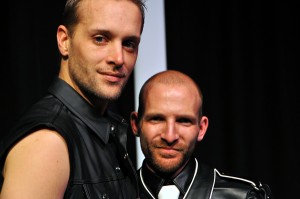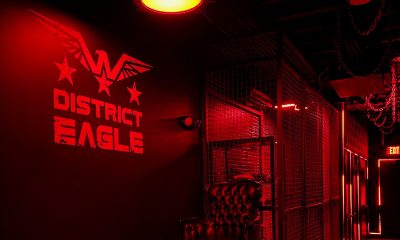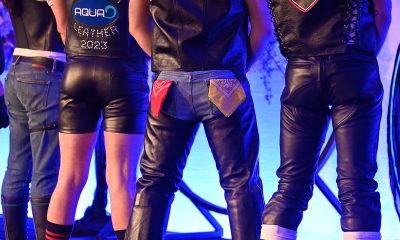Arts & Entertainment
Fetishes and festivities
This weekend’s Mid-Atlantic Leather convention has new location
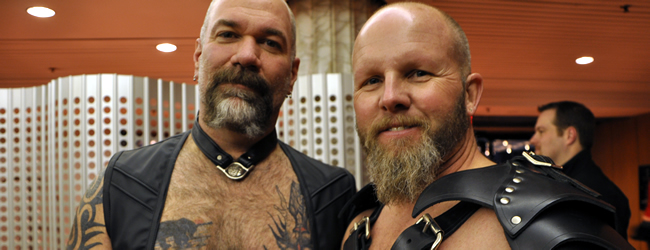
Mid-Atlantic Leather Weekend 2011
Hyatt Regency Hotel Capitol Hill
400 New Jersey Ave. NW
Friday
* Registration — Ballroom level foyer — 4-10:30 p.m.
* Leather Exhibit Hall — exhibit area, Ballroom Level 5-11 p.m.
* Opening Reception (cash bar) — Yorktown Ballroom — 9-11 p.m.
* MAL Bar Crawl Bus — 10 p.m.-2 a.m.
Saturday Jan. 15
* Registration continues — 10 a.m.-5 p.m.
* Leather Exhibit Hall continues — noon-8 p.m.
* Leather Cocktails — Regency Ballroom — 6:30-9 p.m.
* CODE Party — The Crucible — 9 p.m.-2 a.m.
* MAL partner event — discounted admission
for MAL 2001 Full Weekend package holders
* MAL Bar Crawl Bus -—10 p.m.-2 a.m.
Sunday
* MAL Brunch — main lobby — 10 a.m.-noon
* Leather exhibit hall continues
* Mr. Mid-Atlantic Leather Contest — Regency Ballroom — 1 p.m.-5 p.m. (separate tickets are available for this event)
* Reaction — 9:30 Club — 10 p.m.-5 a.m. (separate tickets are available for this event)
The Bootblack Brigade hosts a bar night Saturday starting 10 p.m. at Green Lantern, 13335 Green Court, N.W. — no admission fee
And at D.C. Eagle, 639 New York Ave. N.W., the MAL Weekend welcome begins 7 p.m. Friday and continues through Monday starting at 8 p.m.
More details are here.
It’s back for another year — Mid-Atlantic Leather Weekend.
Once again, Washington becomes this weekend a fantasy scene of leather chaps and cigars, slave collars and chains — with hankie-flagging people seeking the endorphin rush of erotic heat as they cruise hotel lobbies and prowl upstairs corridors for private play parties or hunt exotic thrills at live demos of kink at the Code party. But it’s also the chance to meet old friends and make new ones within the special brotherhood (and sisterhood) of the men and women who embrace leather.
And this year’s gathering happening this weekend, this time at a new hotel, promises once again, according to the sponsoring organization, the Centaur Motorcycle Club of D.C., on its website, to be “one of the hottest leather/fetish events in North America and the world’s largest leather club run.”
“Thousands of leathermen, gearheads, kinksters, rubber freaks and even curious novices from all over the world,” says the promo material, will “come to the nation’s capitol for a weekend of hot, horny fun.”
“We’re literally looking for thousands of people to come for the weekend,” says a confident Larry Barat, the Centaur M.C. promotions chair for the weekend. About 600 or 700 people are expected to register for the full, three-day package, he says, “but we anticipate 2,000 or 3,000 or possibly more to participate in side events organized around the weekend and at the bars,” especially, he said, at the D.C. Eagle and Green Lantern.
The three-day package is $180 in advance or $200 at the door, a package including access to all events and exhibits, said Barat, who also pointed out that “an important new change for MAL 2011” is that entry into the weekend area at the hotel, including for the Leather Exhibit Hall but not the special events, will now require a “Weekend Admission Pass.” The cost for such a three-day pass is $25 if purchased on Friday, $20 on Saturday, or $10 on Sunday or alternatively $10 for any one of those days only.
The D.C.-based Centaur club, now in its 41st year, according to Barat currently consists of about 30 active members. It has sponsored MAL, now in its 31st year, from the beginning. After more than a decade of being housed at the Washington Plaza Hotel at Thomas Circle, it moves this year to the Hyatt Regency on Capitol Hill, because “we simply outgrew that hotel,” Barat says. The Washington Plaza has only 360 rooms, while the Hyatt has about 800.
“Obviously with a new home for MAL, we’re excited about that, but also a little nervous,” he adds, but he has been meeting with Hyatt staff, along with other Centaur event planners, and believes everybody feels that the weekend will be a success.
Another MAL Weekend coordinator, its chairman and fellow Centaur member Patrick Grady met Monday for another meeting “with about 30 hotel managers in the room,” and Grady says “everybody at the Hyatt is very enthusiastic indeed.”
This year, they have booked only about three-quarters of the Hyatt’s rooms because, says Barat, “we were trying to be a bit conservative this year and not over-extend ourselves.” Even so, weekend registration has spilled over into rooms reserved at the Liaison Hotel across the street.
All MAL attendees will be on the same floors. Organizers hope next year to fill the entire hotel.
Grady says his first MAL Weekend began when he joined the Washington Plaza Hotel as its director of catering in 1997 and a month later hundreds of MAL Weekend participants thronged the hotel, the second year at that venue, and he got his first real look close-up at the leather community.
“I was a newbie in ’97,” he says, “and I didn’t know their community even existed.”
He was taken in by the friendly vibes and soon, he says, he began to frequent the Eagle and then to hang out with the Centaurs. By 1999 he had sunk his own roots deep into the leather world.
Grady says that after that first weekend, “I couldn’t wait to see everybody back in ’98,” and he was drawn to the sense of community that he found, especially in the Centaur MC. Yes, he knows that some LGBT people are uncomfortable with the more taboo aspects of the leather world — the BDSM sexuality — but he says the reality is that the leather world — and the Centaur club — is “very diverse.”
“We have members who have motorcycles and those who don’t, who are large and skinny, tall and short, and the only real common denominator is that we like one another,” he says. “Some are hard-core leather folk and others are just out for a good time.” But he admits that “when we gather together sometimes we are a little much for some people — we tend to be very gregarious.”
His objective this year is simple: “to make new friends and renew old acquaintances,” a goal echoed by Barat, who says “our aim is to have fun and make sure everybody who comes has fun, so they can meet new people and explore new things.”
The signature events, says Barat, are the Leather Cocktails reception Saturday evening, the buses for the MAL bar-crawl, the CODE party at the Crucible S&M club Saturday night into the wee hours of Sunday morning, the Mr. Mid-Atlantic Leather Contest Sunday afternoon, and the finale event, the Reaction dance at the 9:30 Club from 10 p.m. Sunday until 5 a.m. Monday. Throughout the entire weekend also, another big draw is the Leather Exhibit Hall located on the hotel’s Ballroom level, with dozens of vendors of gear, books and other paraphernalia.
The MAL Weekend in 1998 was “the first big leather event” he ever attended, though he had lived a leather lifestyle “on and off” since he was 19. Now 50 and a U Street resident for the past seven years, by day Barat works on international public health issues for the U.S. Government.
For him, owning a bike is important to the leather lifestyle, and though he recently sold his own Harley Davidson “Fat Boy,” now he says he can’t wait until the weather gets warm again to get his next new bike. Though he says another D.C.-based club, the Spartans, “are more into motorcycles,” the Cenatur M.C. still sponsors runs two or three times a year, usually to Skyline Drive and into West Virginia and back.
Like Grady, Barat was won over by the welcoming vibes of community he felt at his first MAL Weekend: “I was really kind of shocked at how friendly everyone was,” and how eager people were to teach him about the things he didn’t know, and he also began to understand the wide variety of lifestyles subsumed under the leather label.
The gay male leather subculture has existed, according to most accounts, since the late 1940s, when it grew out of gay men who had typically worn uniforms during World War II and mustered out and were looking for a way to sustain the homosocial world and its rituals and rules of masculine identity they had experienced during wartime. Soon these men found their way into the culture of biker clubs, and for them the lure of leather signified a code of dress rooted for most — though not all — in sexual activities, often defined by the sexual practices loosely grouped under the label of BDSM.
“Leather is a term that includes dressing up and getting into sexual scenes when dressed up, acting out certain sexual fantasies like getting flogged, at one end of the spectrum, but you don’t need to dress for BD events,” Barat says.
At the other end of the spectrum, he says, people just like the feel of leather and the thrill of the road and the ride.
“And it’s everything in between,” he says,”plus, it’s not just leather alone anymore – there’s rubber, there’s sports-gear, there’s uniforms. And now there’s also a lot of young guys into dressing up as super heroes and comic book heroes.”
“It’s a whole range of of people and the nice thing about the community is that it’s very accepting,” Barat says. “You see a guy in full leather gear talking to a guy dressed up like Batman talking to a guy dressed up in full rubber.”
For many, participation is a chance to distinguish themselves from mainstream sexual activities. For some it can mean immersion in sexual kink. For others, just wearing the trappings of black leather is the main point, an erotic fashion statement expressing heightened masculinity.
The pioneering gay motorcycle clubs — the Satyrs of Los Angeles, established in 1954, and others like the Warlocks of San Francisco — reflected that same sense of disaffection with the postwar mainstream. It also provided an archetype for gay men who resisted effeminate stereotypes. For years, Larry Townsend’s “Leatherman’s Handbook” was the guide by which rank in the leather community — slave, boy, sir and master — was determined.
But by the 1980s, and perhaps even earlier, a rebellion arose against old guard role rigidity, and instead there was a new emphasis upon choices and personal self-identity, in which a person might consent to begin and end as either slave or master or switch back and forth. In this new world of greater flexibility, leather practitioners defined themselves as “new guard,” and an increasing number of pan-sexual clubs evolved as well.
“There’s a generational aspect to it,” Barat says. “The old guard has to do with fixed attitudes concerning dominance and submissiveness, and in the old guard ‘D’ and ‘s’ is not just something that one does in sexual play, but something one lives 24/7.”
He says it’s now more flexible and all a matter of self-identification, not following rules.
Barat says he is a good example of this transition.
“I began as old guard and in the past I identified as a boy and more recently as a sir, but now as I get older I’ve stopped labeling myself, and now I see myself as a new guard kind of guy.”
As for the Centaurs, he says that some are into BDSM and others are not, but it’s not a primary focus of the club.
“Some of us wear leather and are into gear and not so kinky, and there others who are kinky and don’t necessarily wear a lot of leather.
Meanwhile, pop culture itself has absorbed the look of leather and the feel of erotic alternatives. Witness the numerous popular images of Elvis from the 1960s fully clothed in black leather and then 1970s heavy-metal bands such as Kiss, Black Sabbath and Judas Priest who were cloaked in leather. The latter’s lead singer Rob Halford, himself openly gay, wore a leather costume on stage as early as 1978. Soon codpieces and even harnesses proliferated on metal-rock costumes, as such gear became appropriated by internationally successful bands like the L.A. metal band Motley Crue.
Now numerous lesbians also identify as leatherwomen and a leather pride sticker adorns the guitar of singer Joan Jett. San Francisco leather and lesbian activist Pat Califa co-founded one of the first lesbian S&M groups, Samois, and became a prolific contributor to lesbian BDSM literary erotica and sex handbooks. Leather and Lace, an “old guard” woman’s BDSM social group, was founded in Los Angeles in 1980, and in New York City there was LSM – the Lesbian Sex Mafia.
Another demographic shift in leather, says Barat, has come as younger leathermen and leatherwomen enter the worlds of leather kink, fetish and gear. It used to be mostly men over 40 graduating into the leather lifestyle, he says, “but now guys get into this lifestyle at a very young age and we’re seeing guys at our events in their early twenties.”
Barat admits, however, that leather “was once so taboo and is still not fully accepted within the larger gay community.” He hopes these attitudes are changing, but that “large parts of the gay community are still very intolerant of leather folk.” He says “there are very conservative gay people, who think we should all be monogamous, live in the suburbs, have children and go to church.”
Several entertainment guests will perform. Comedy duo Dick and Duane (Richie Cohen and Duane Tragis) are slated along with the traditional Mr. MAL 2011 contest Sunday afternoon and the Reaction party at which DJ Susan Morabito will spin.

The Gay Men’s Chorus of Washington perform “The Holiday Show” at Lincoln Theatre (1215 U St., N.W.). Visit gmcw.org for tickets and showtimes.
(Washington Blade photos by Michael Key)
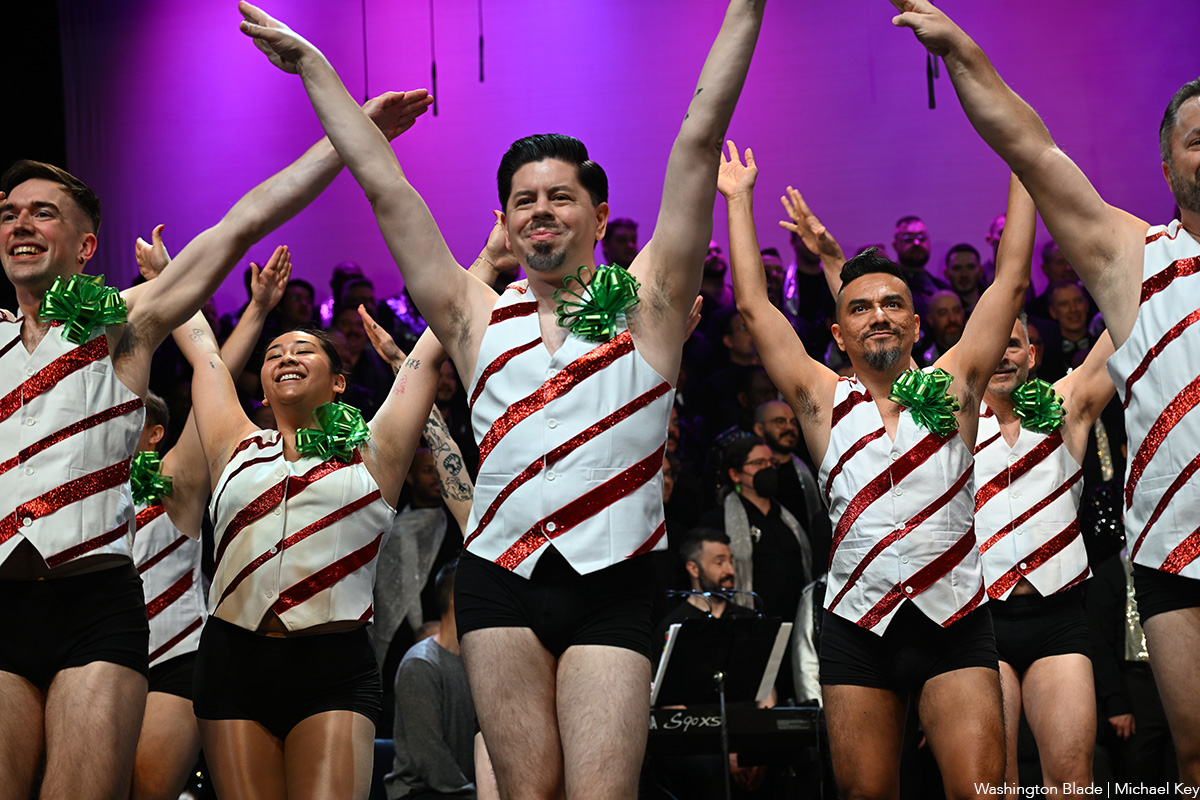


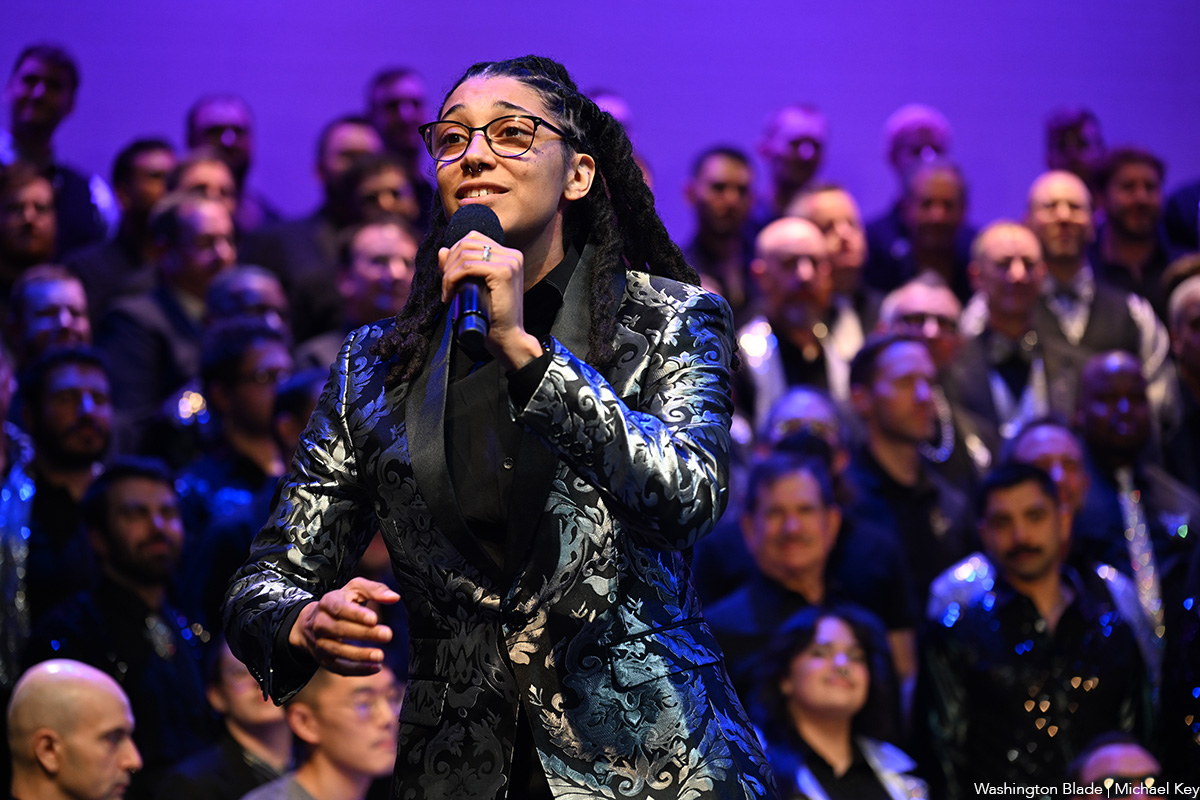
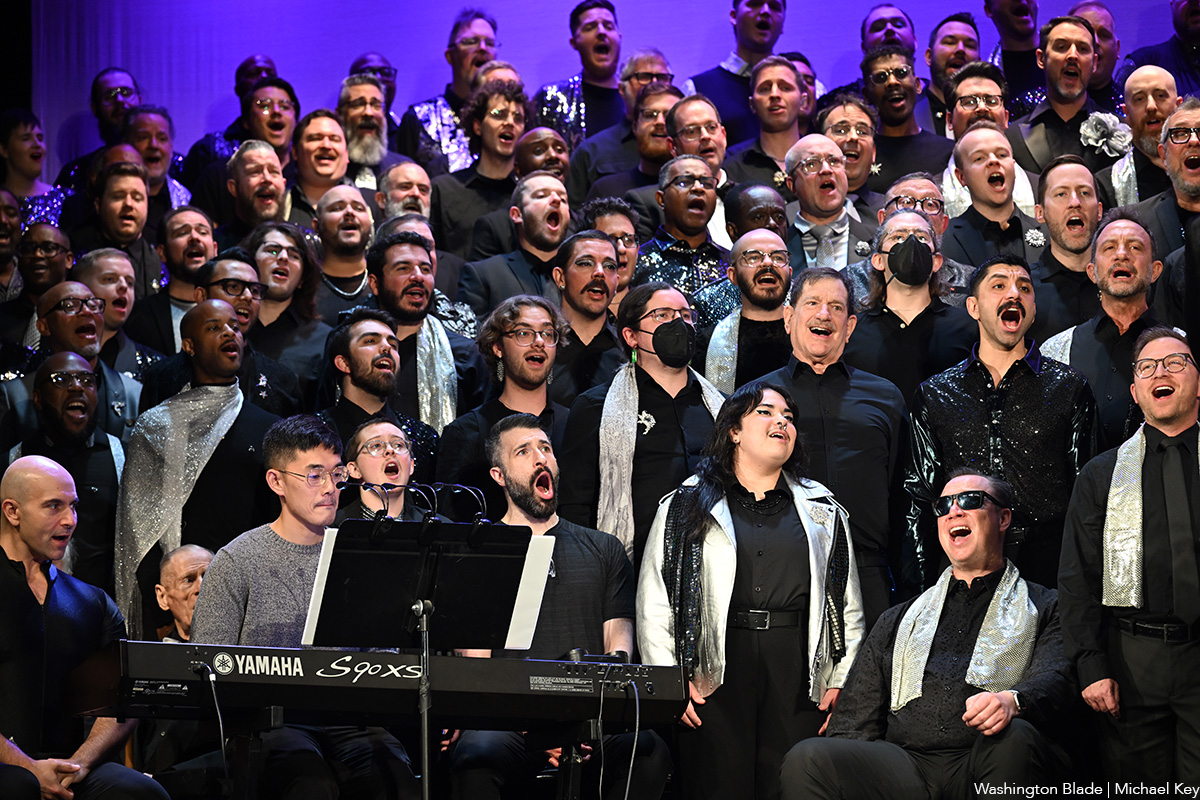






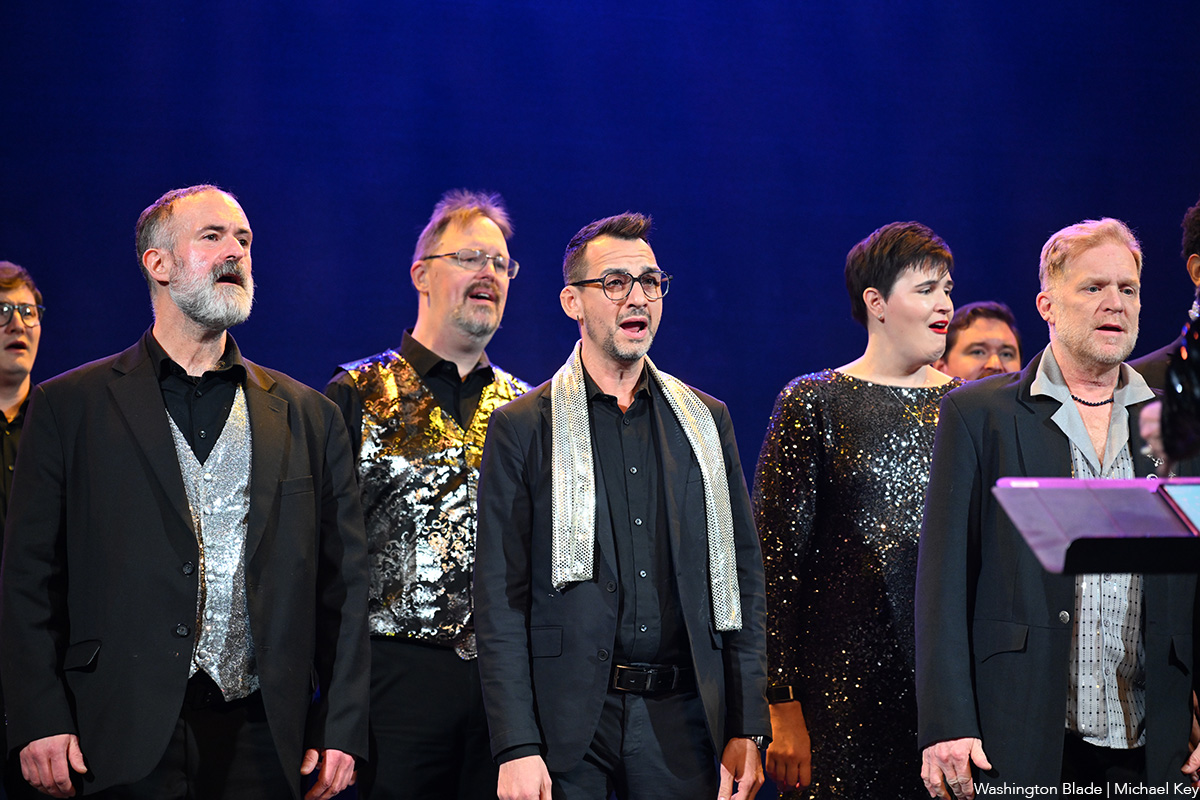
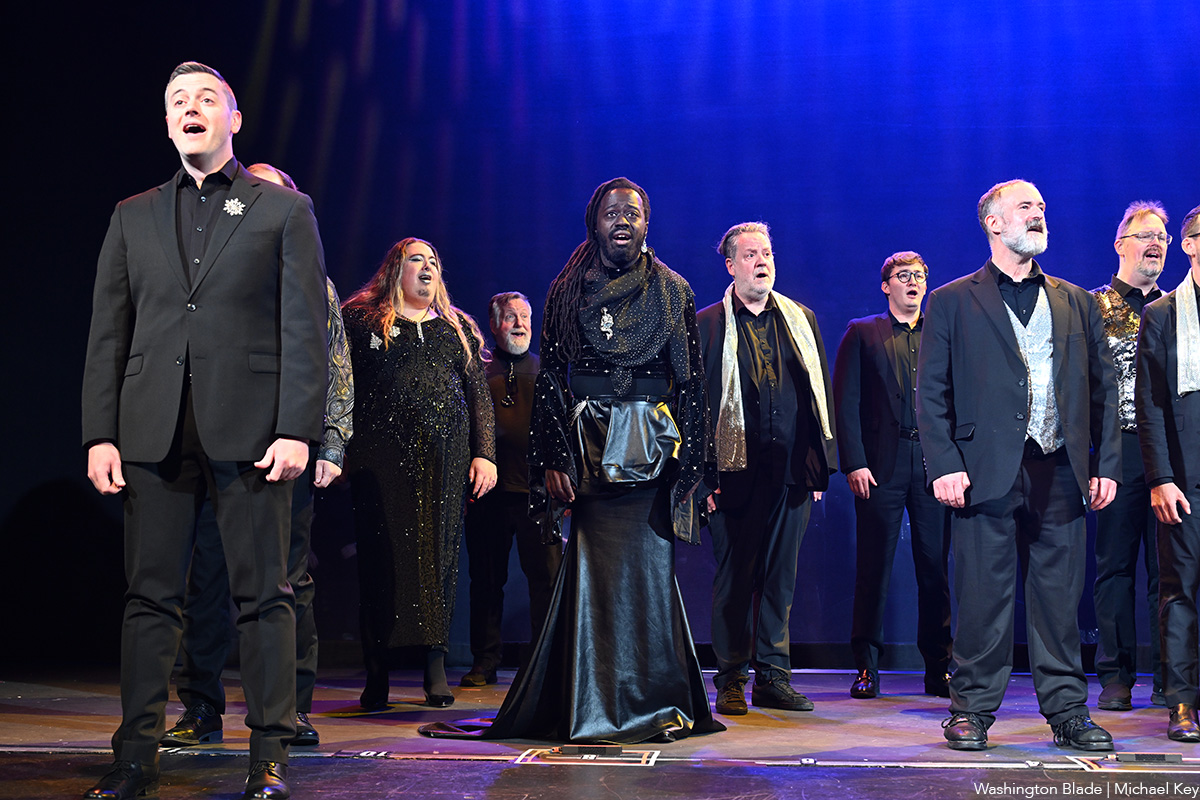
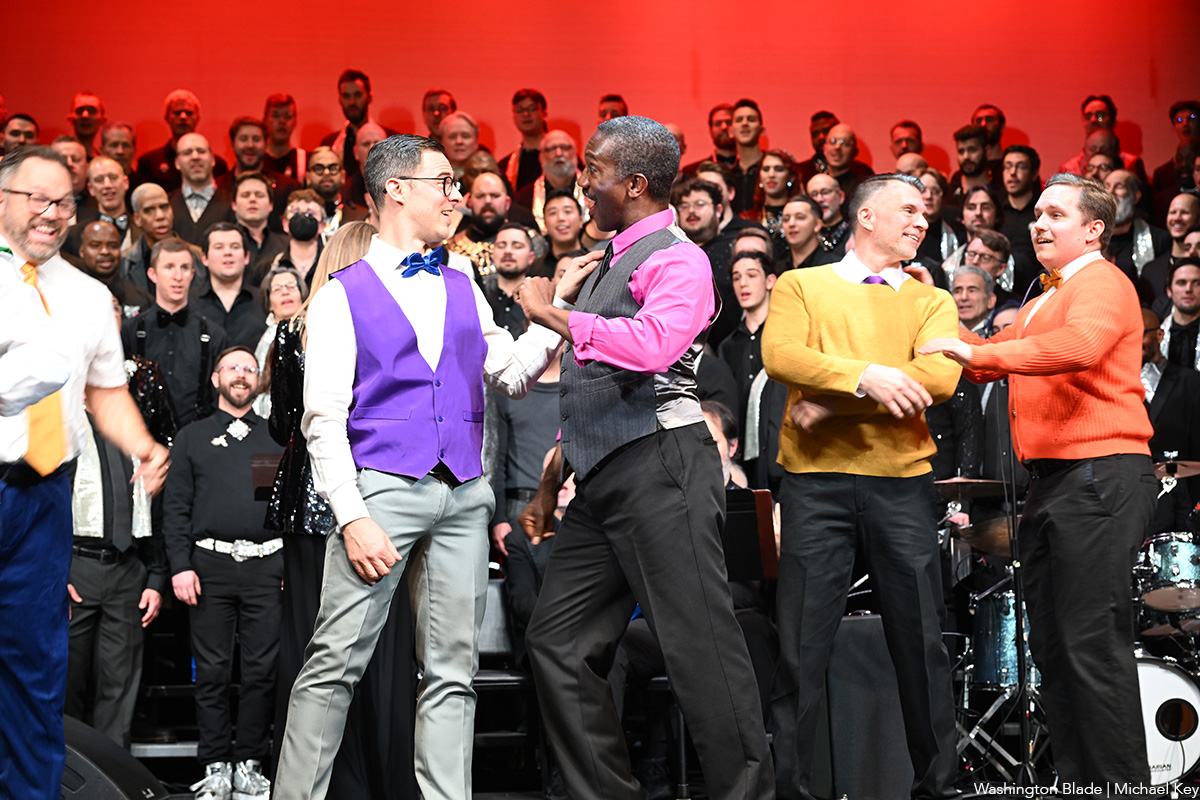
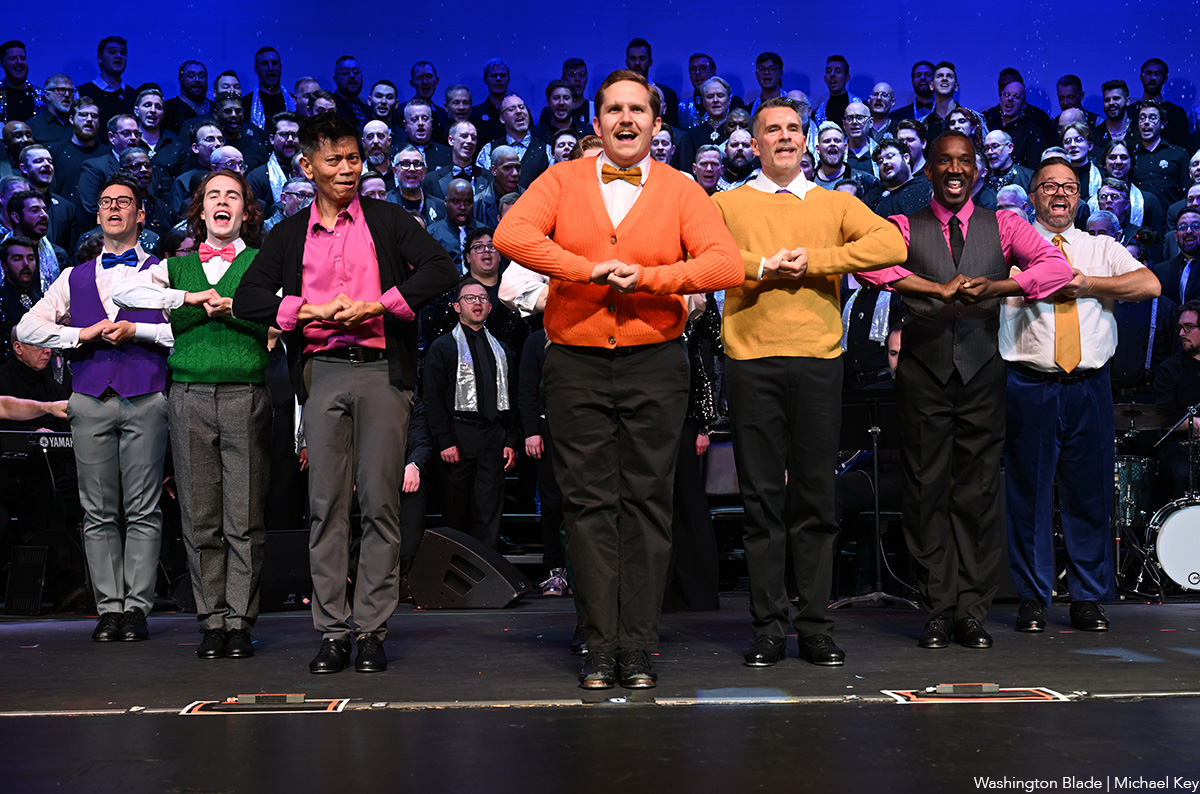

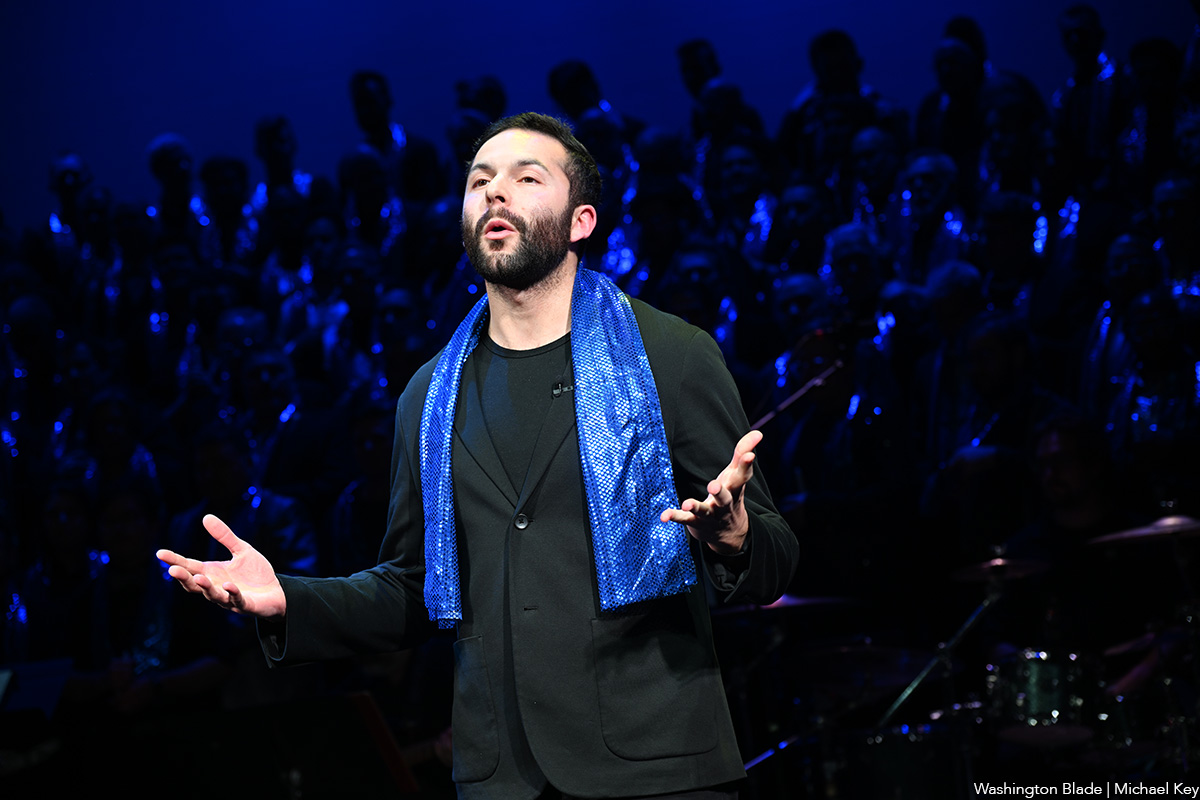
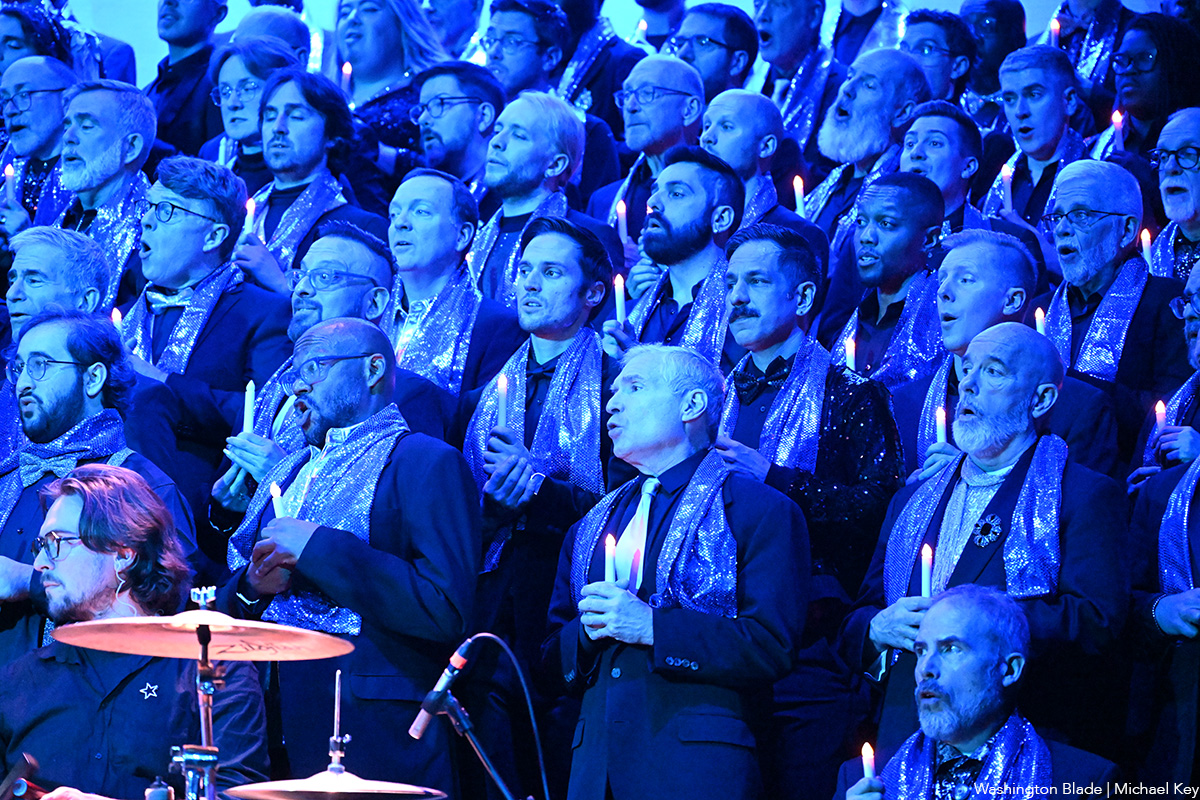
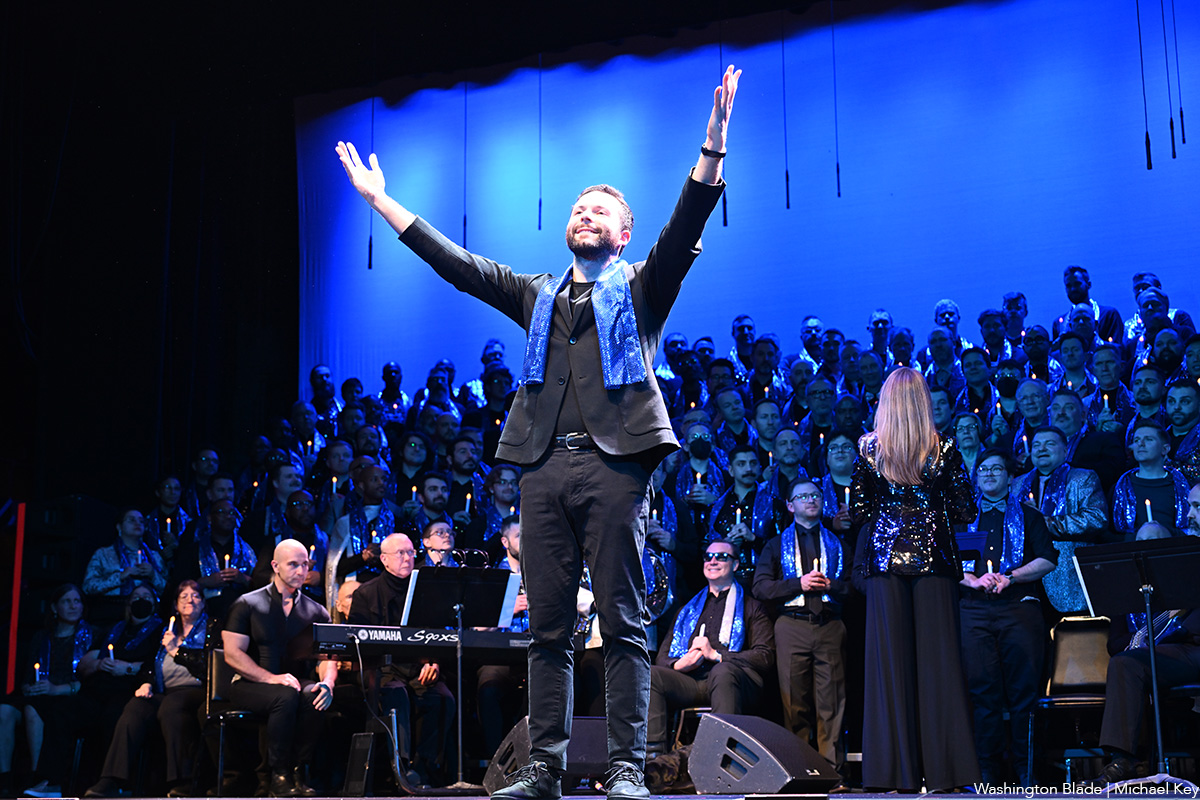


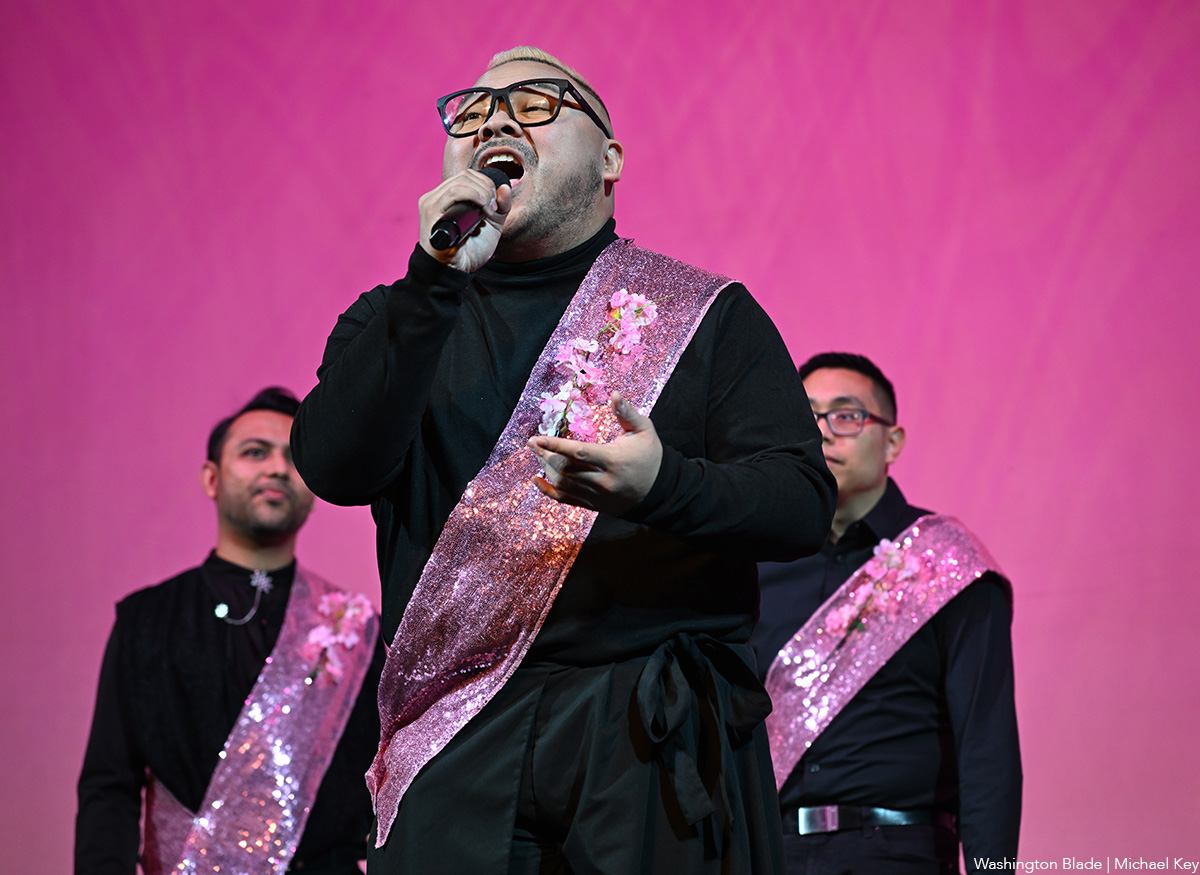

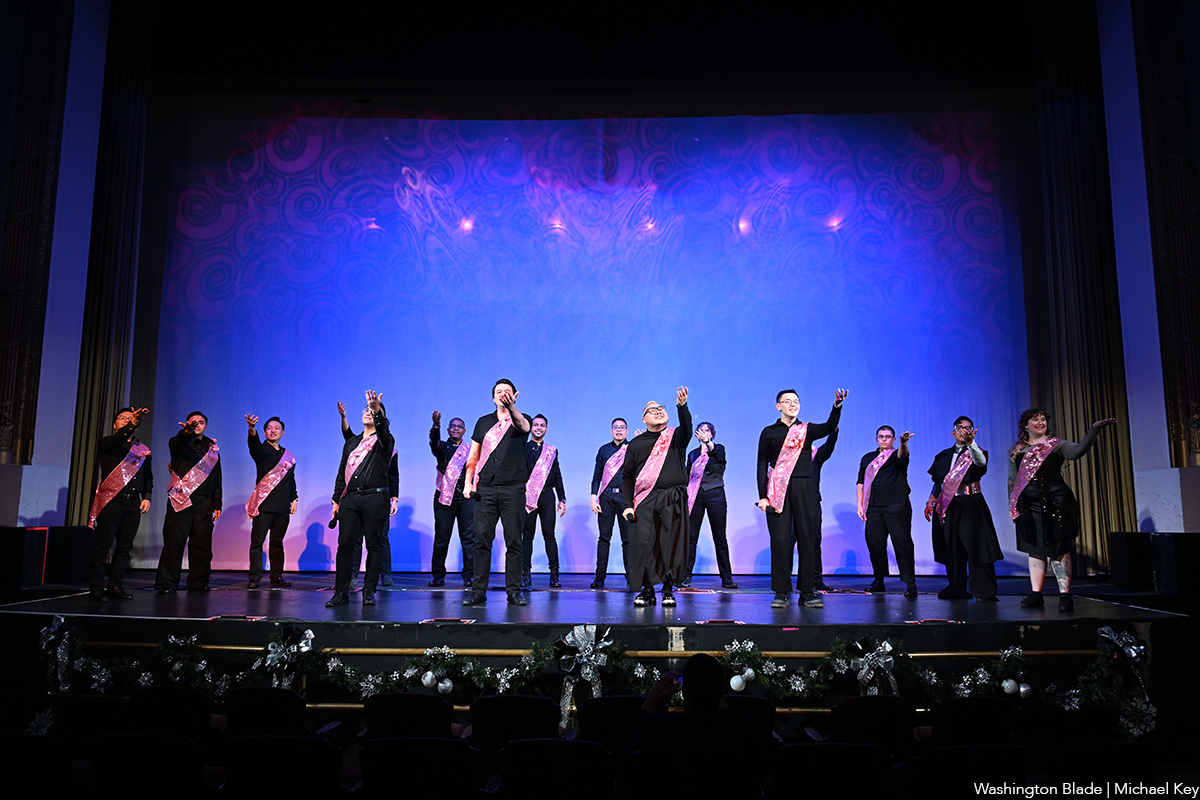
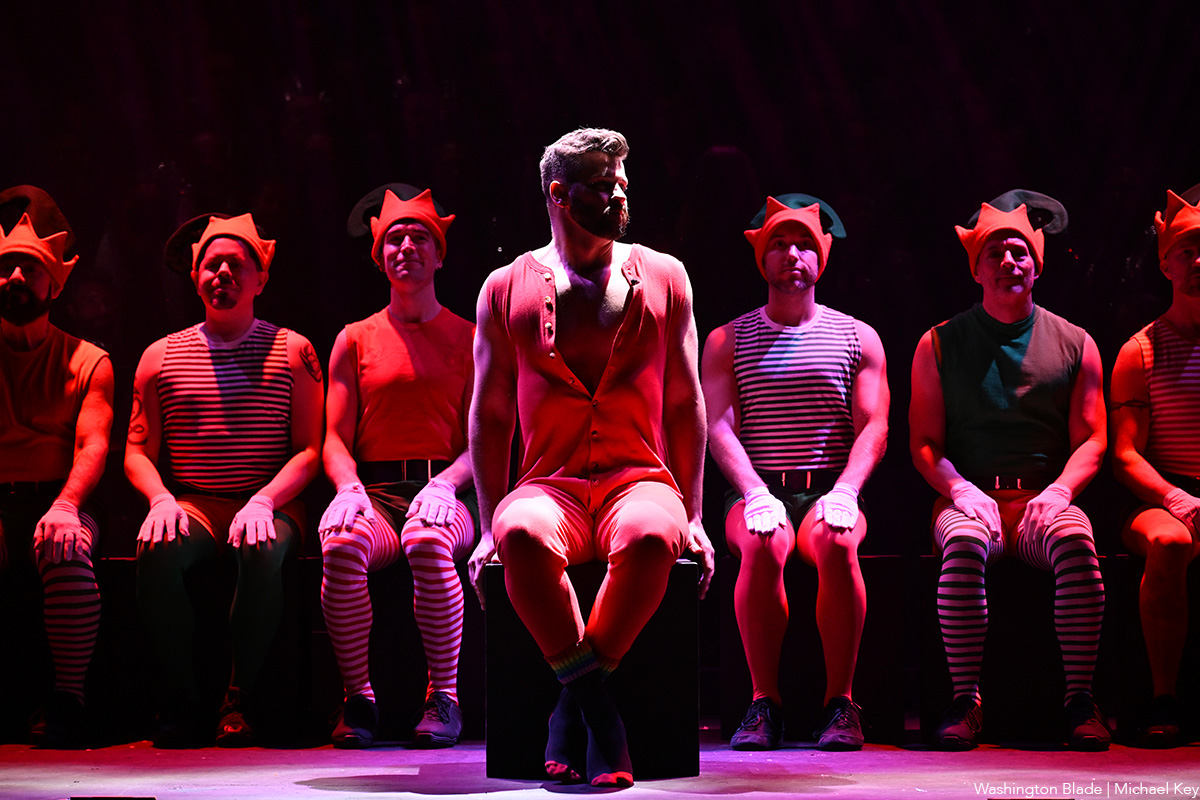

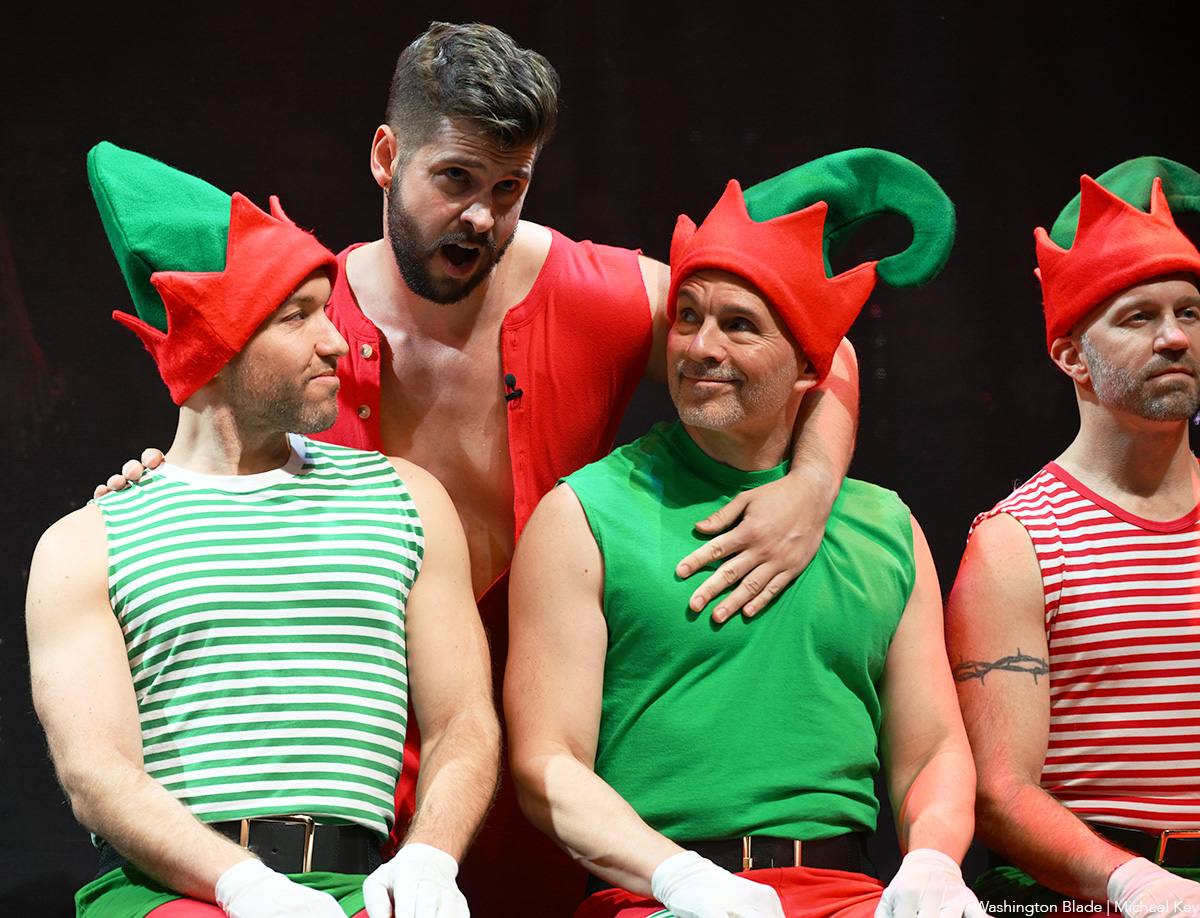

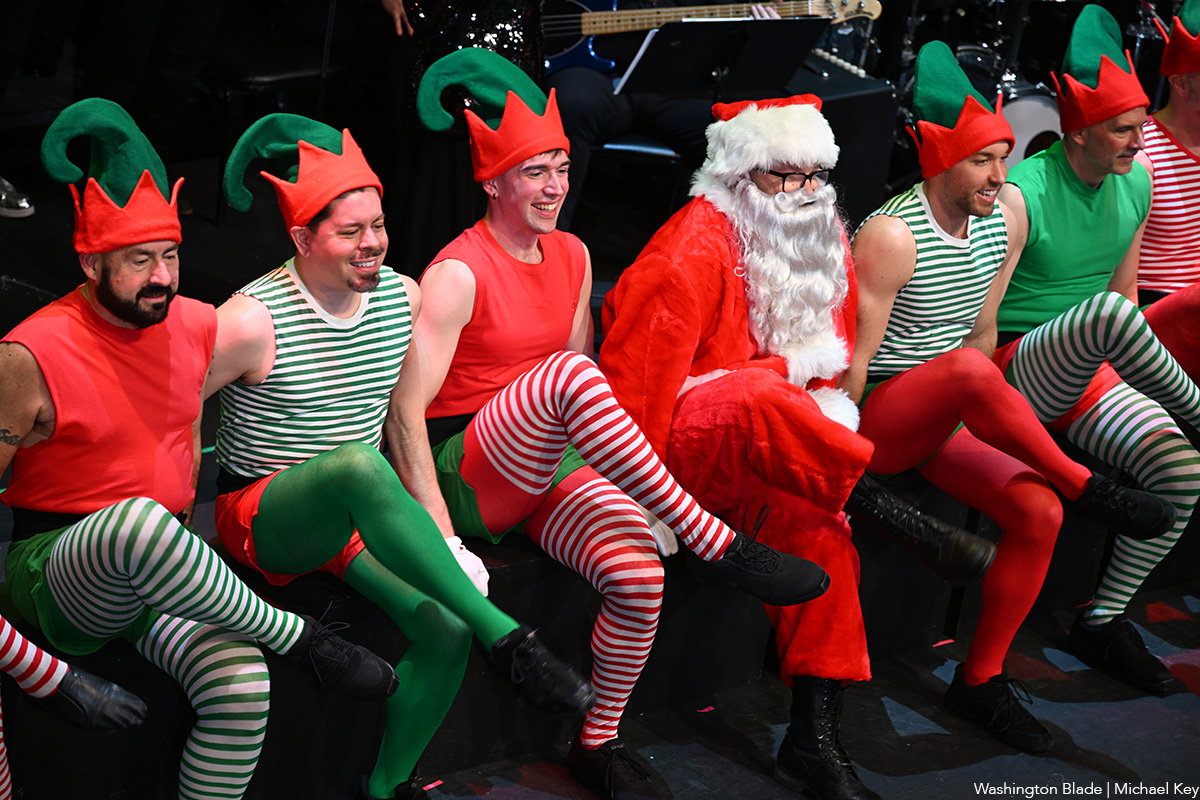
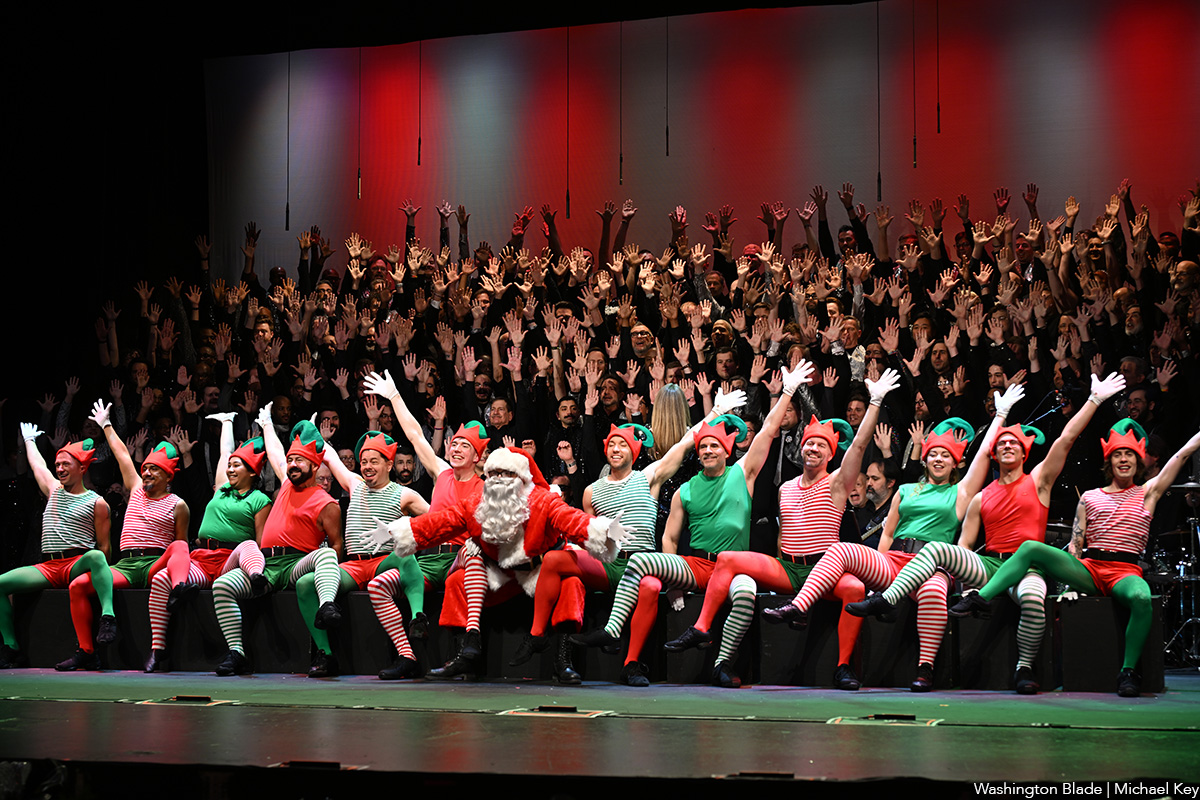

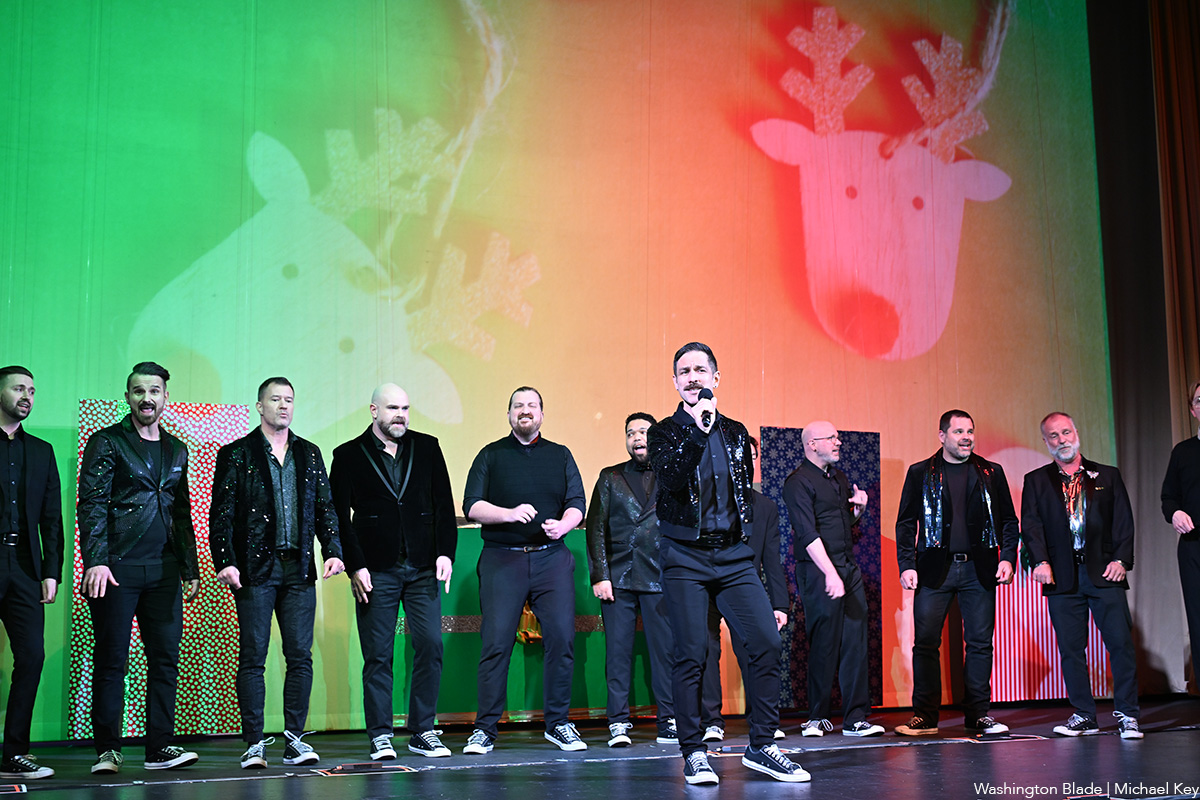
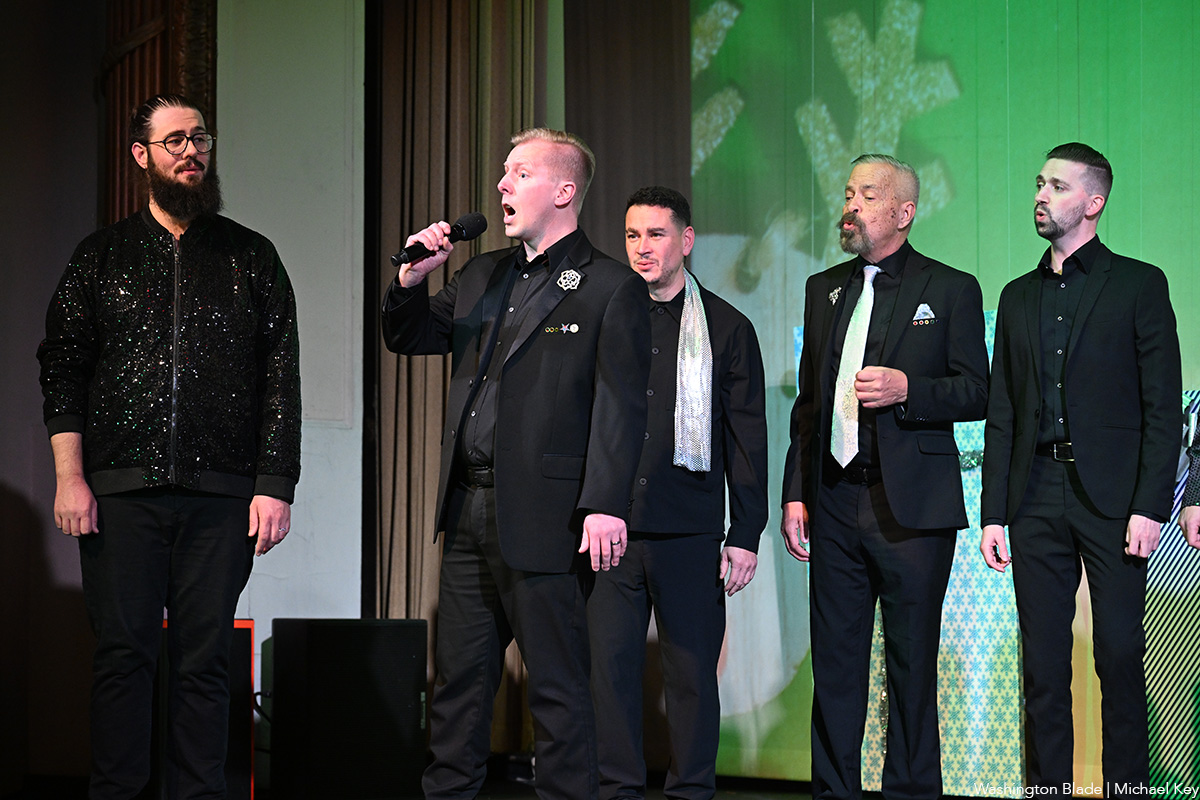
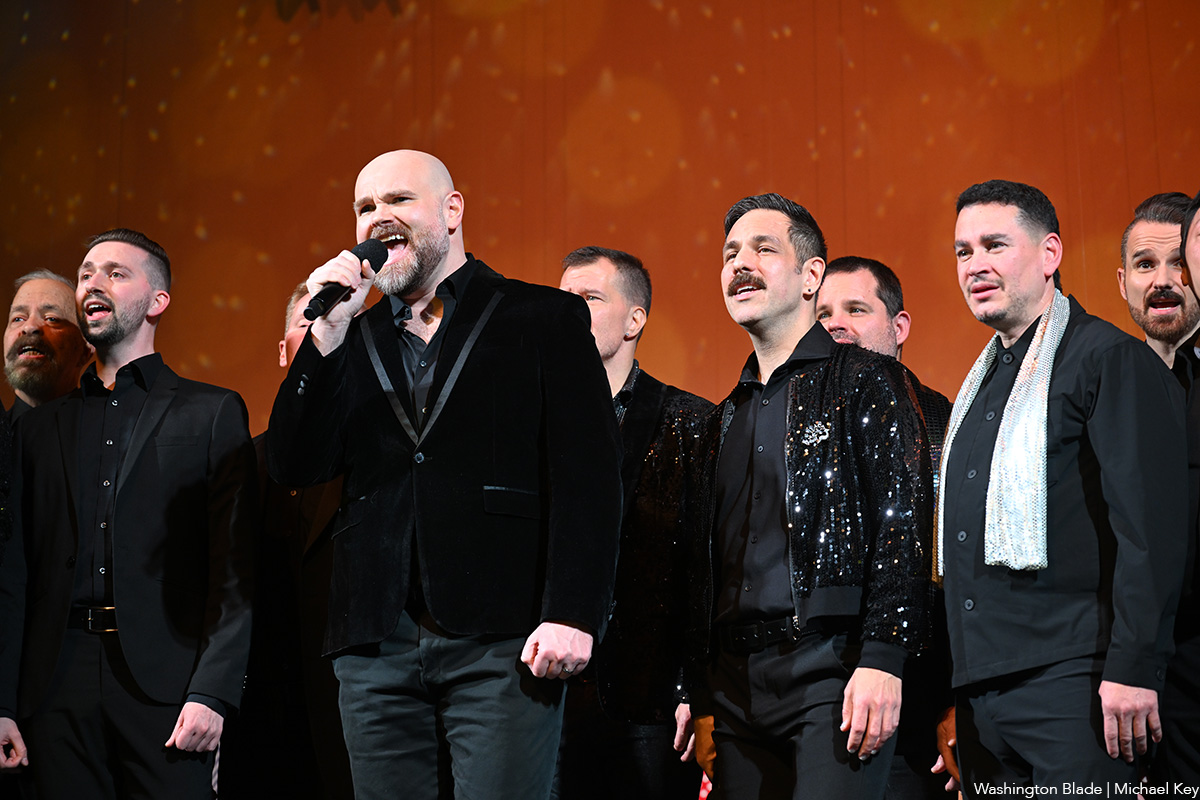
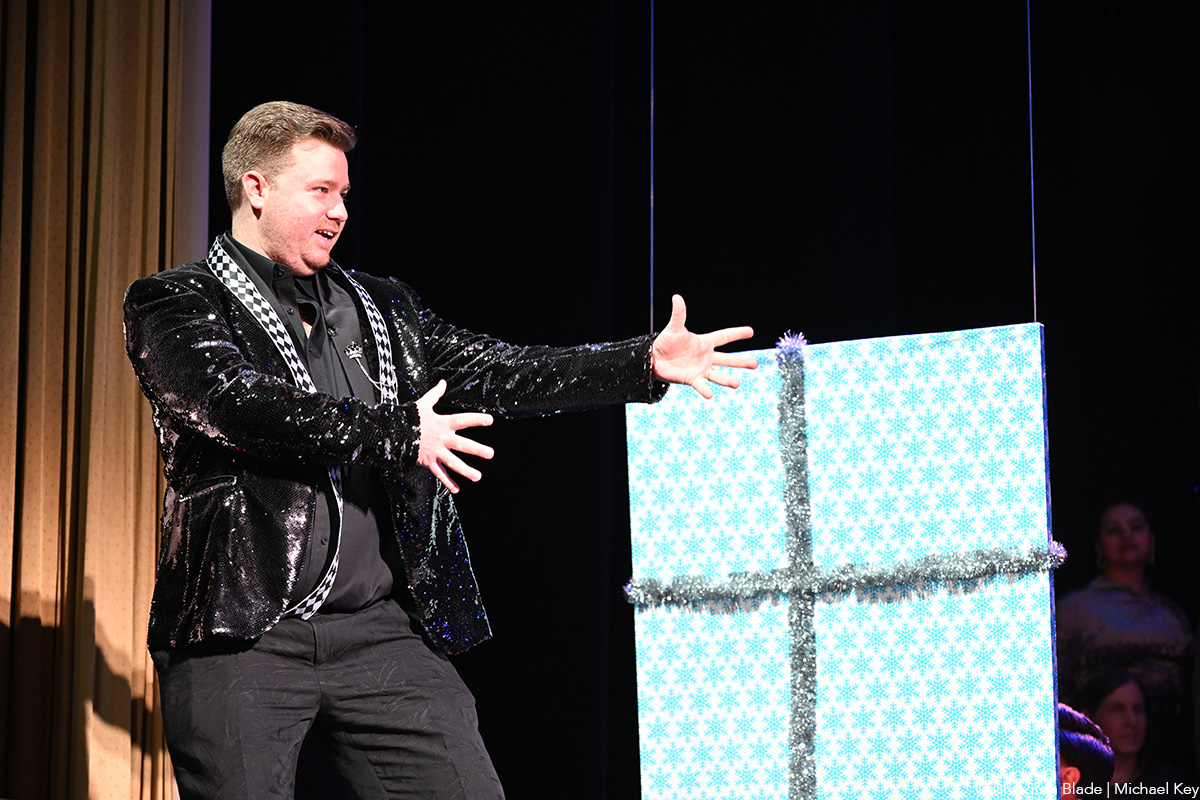
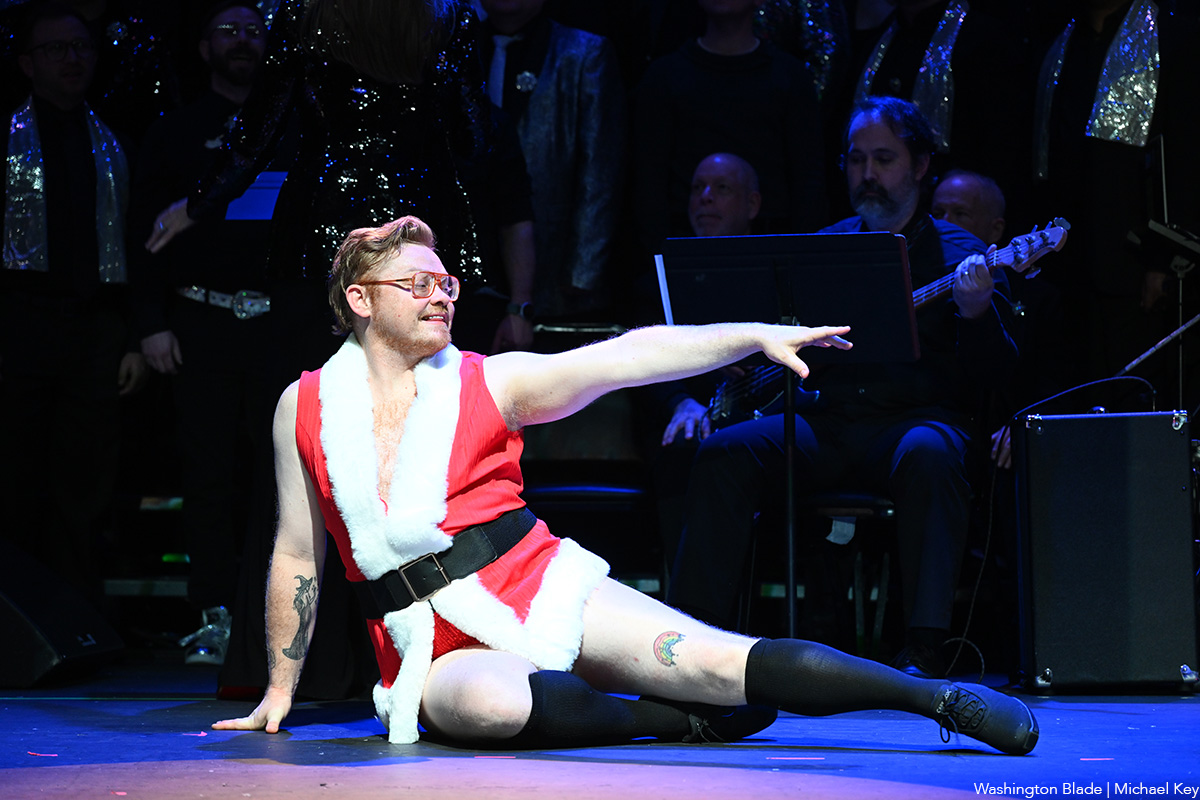
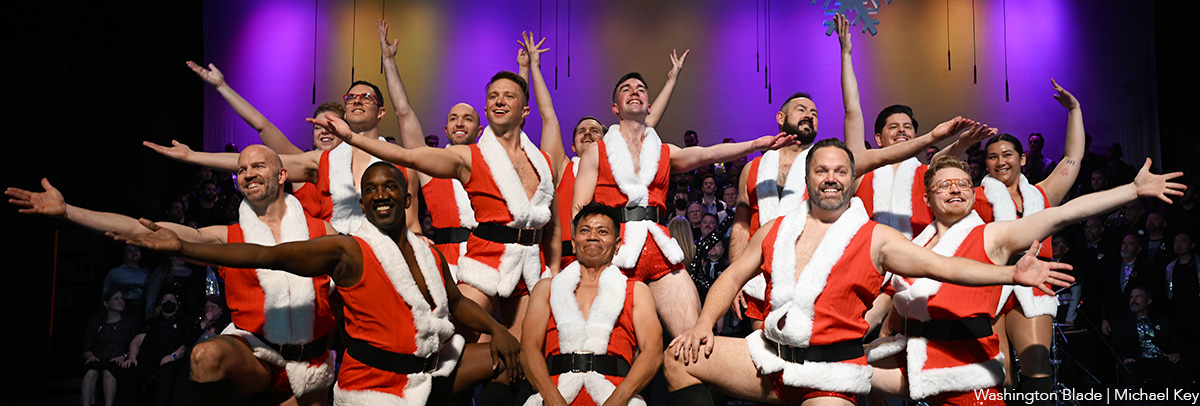
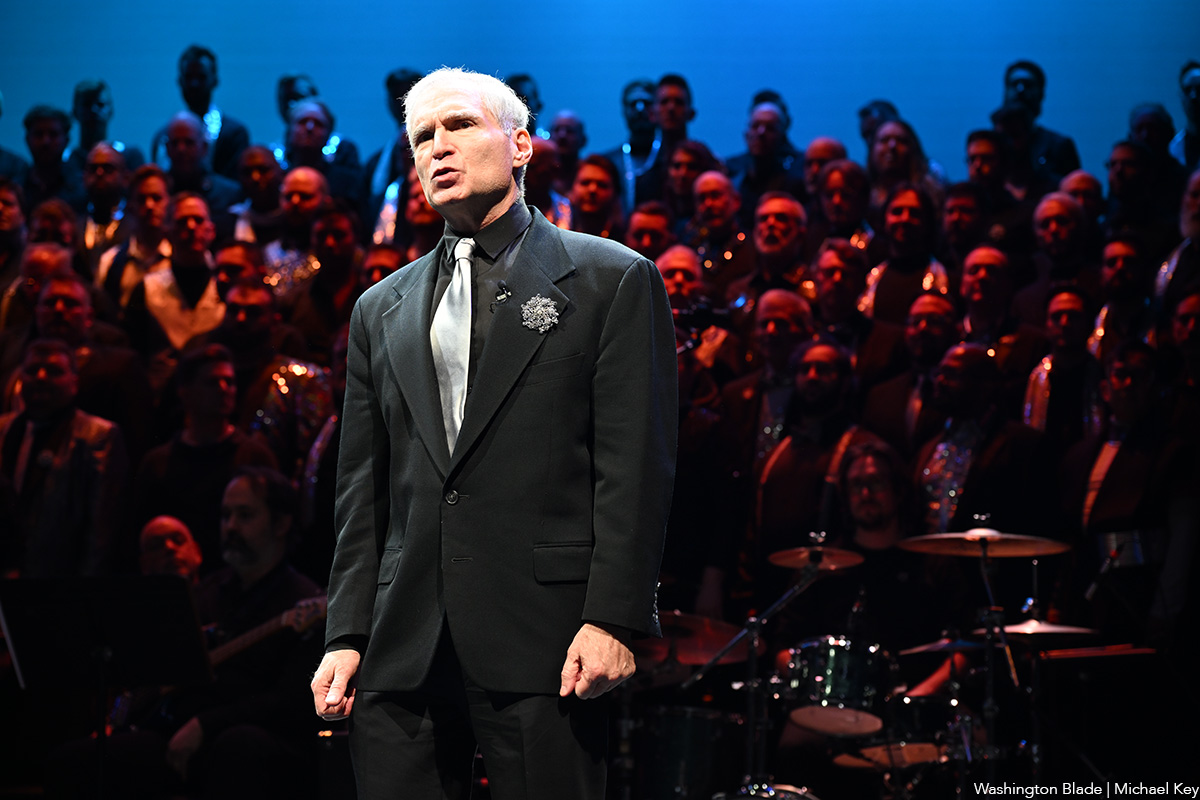


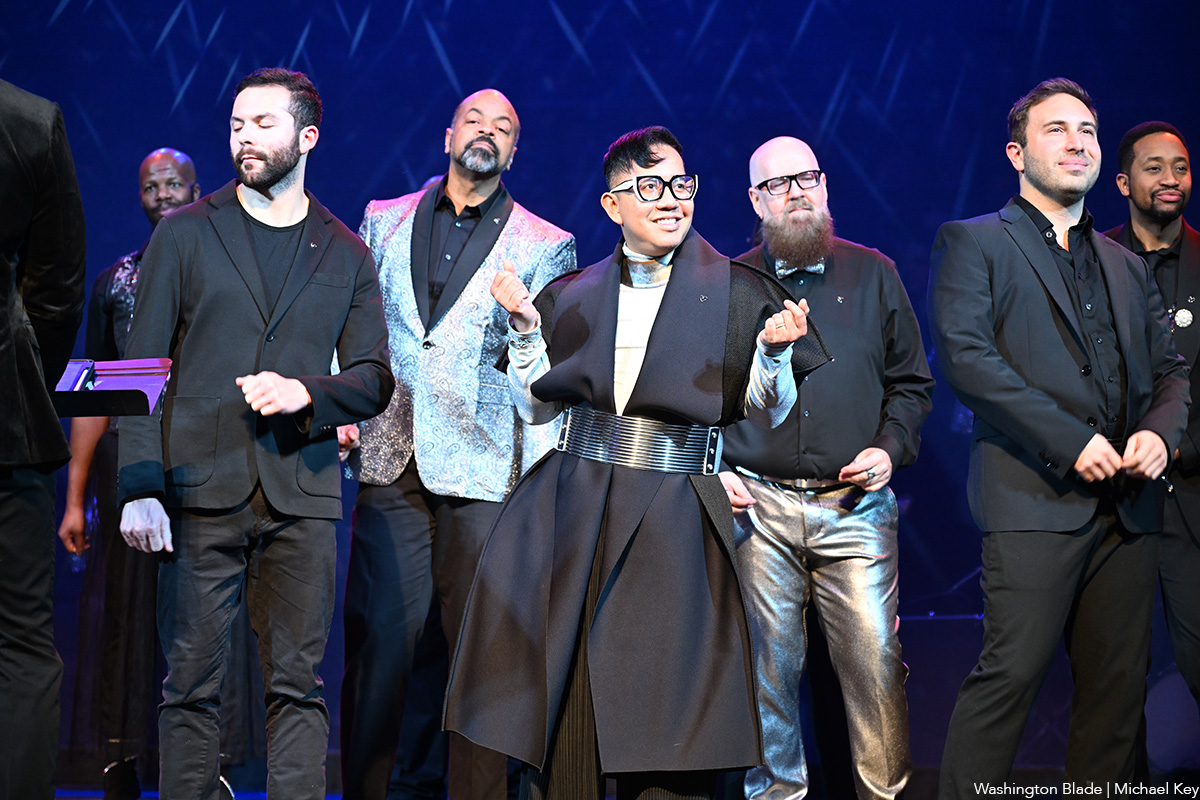


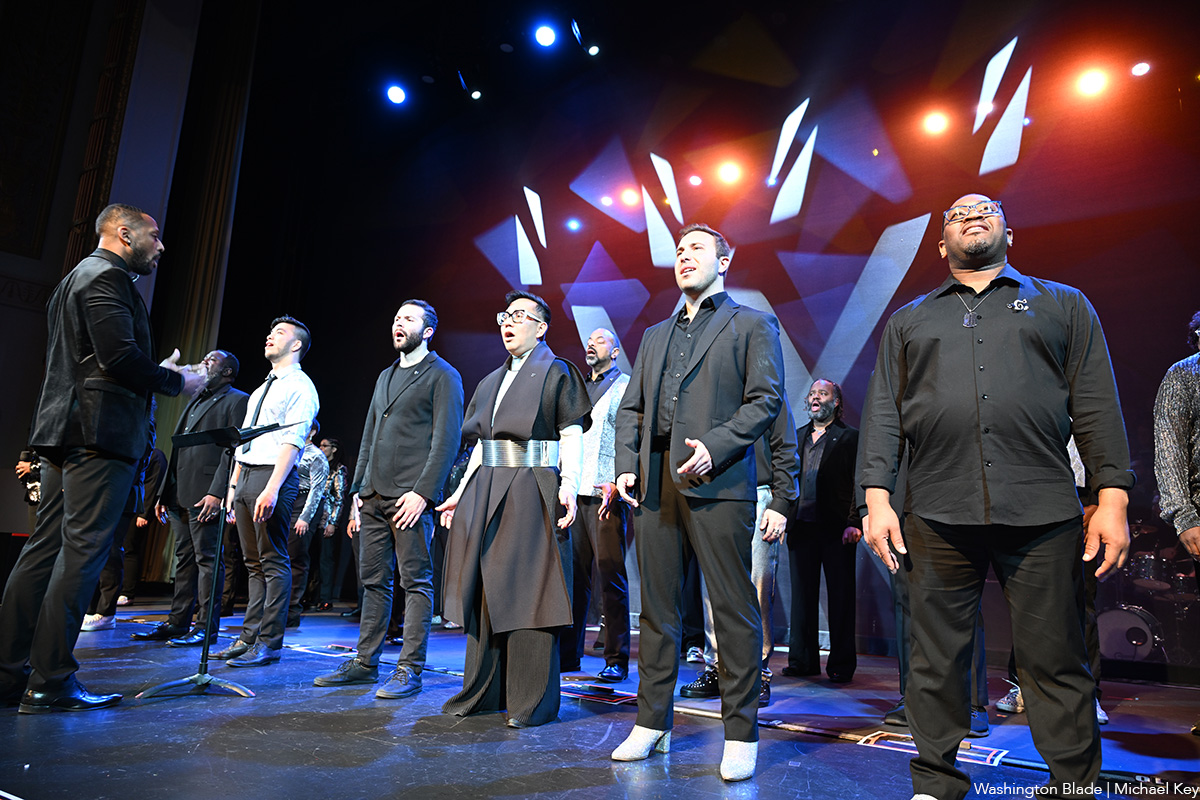


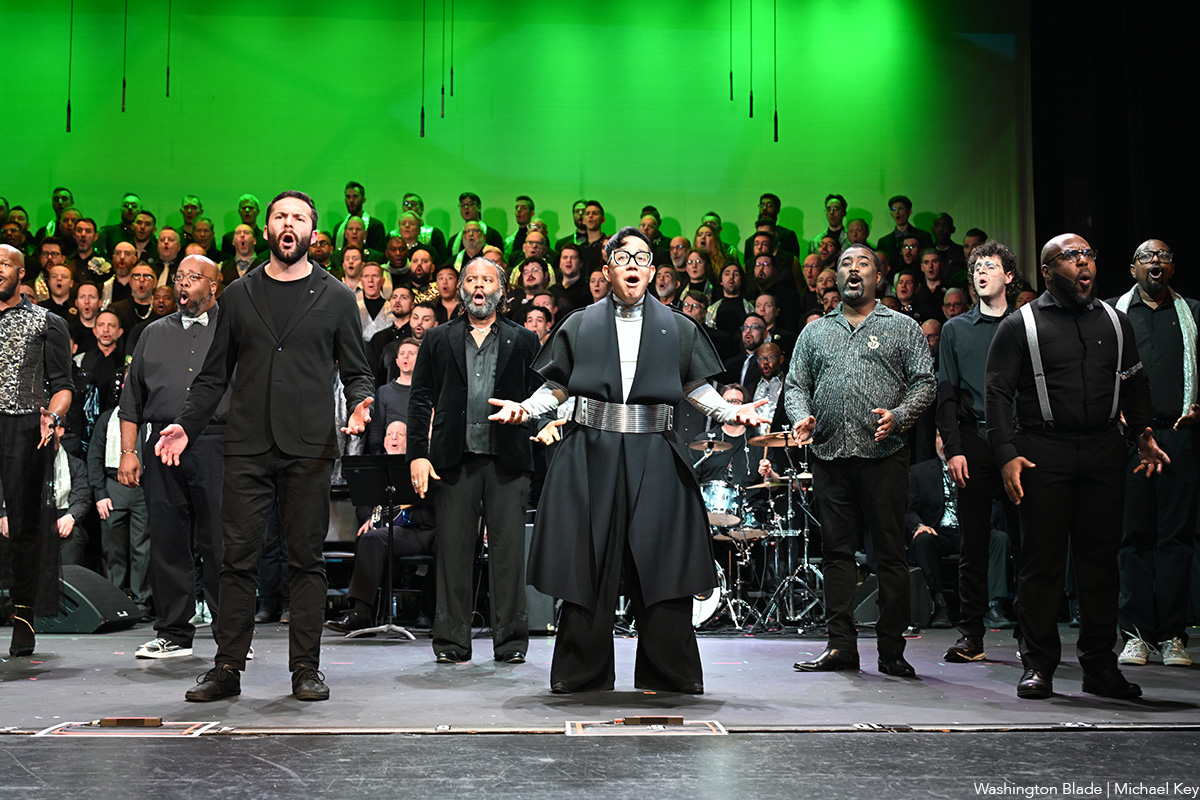
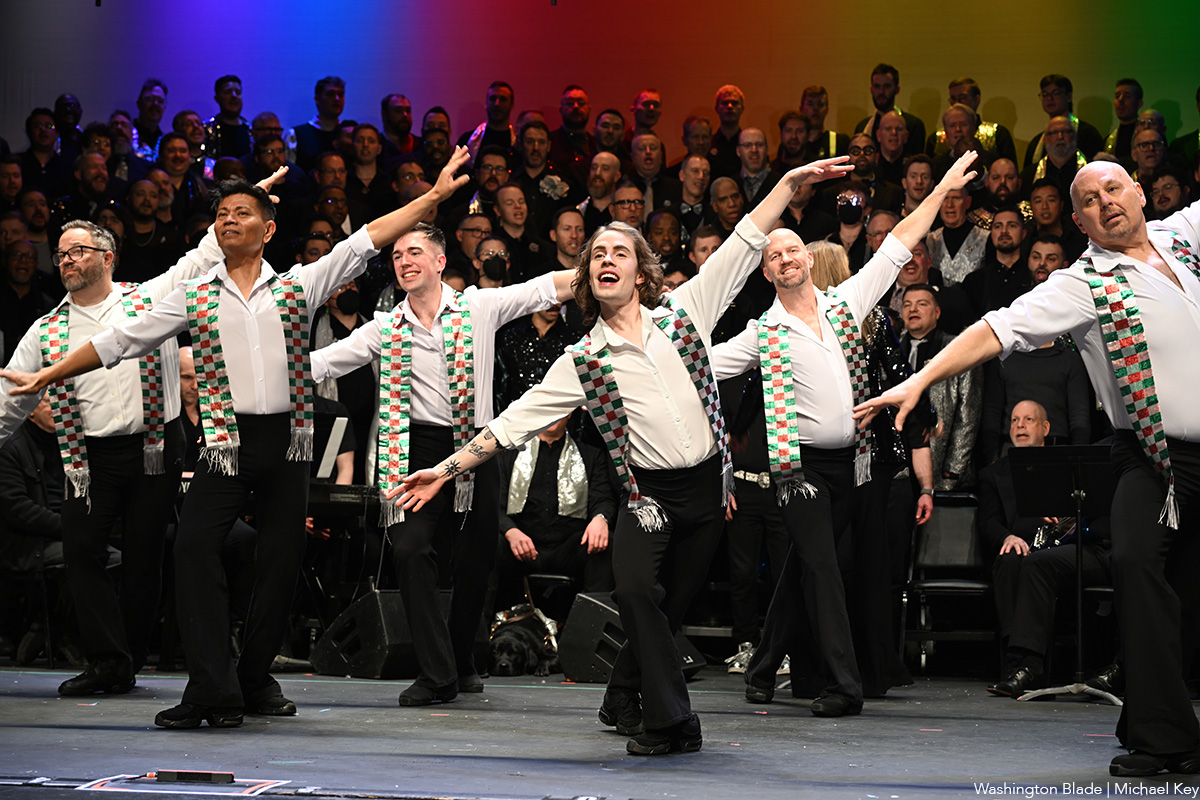

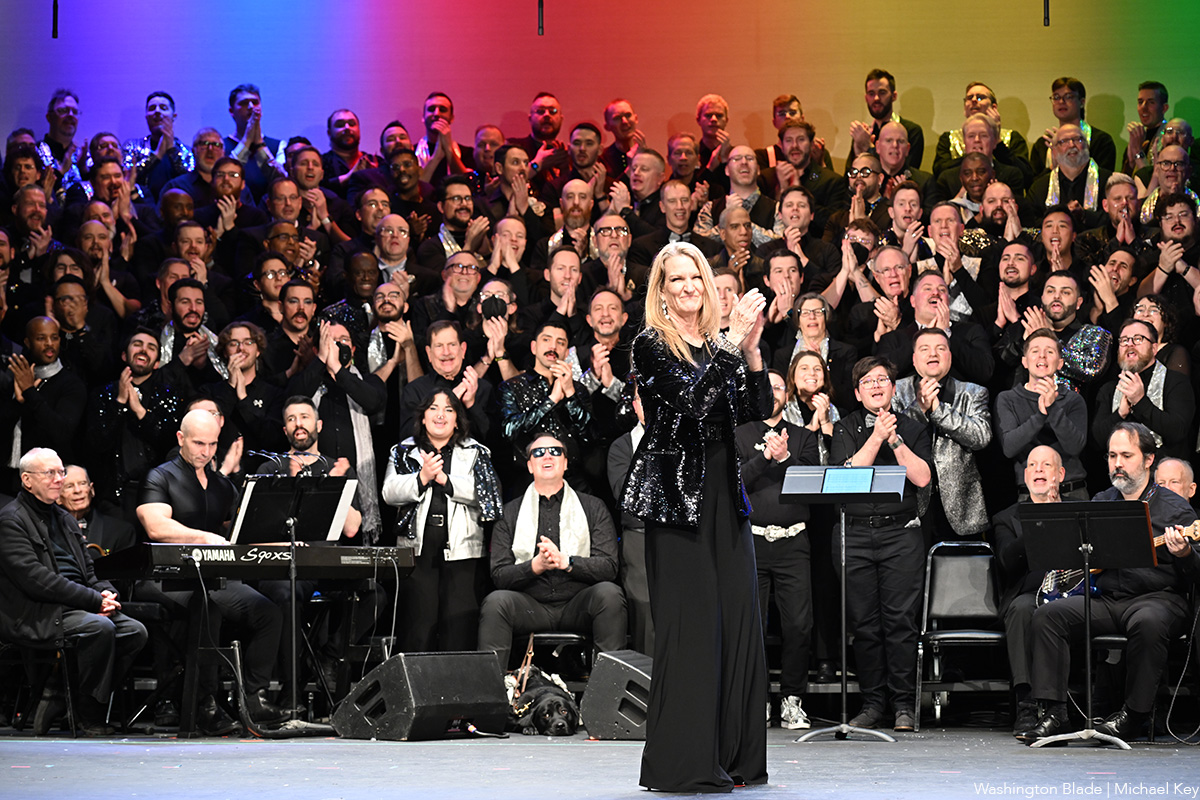
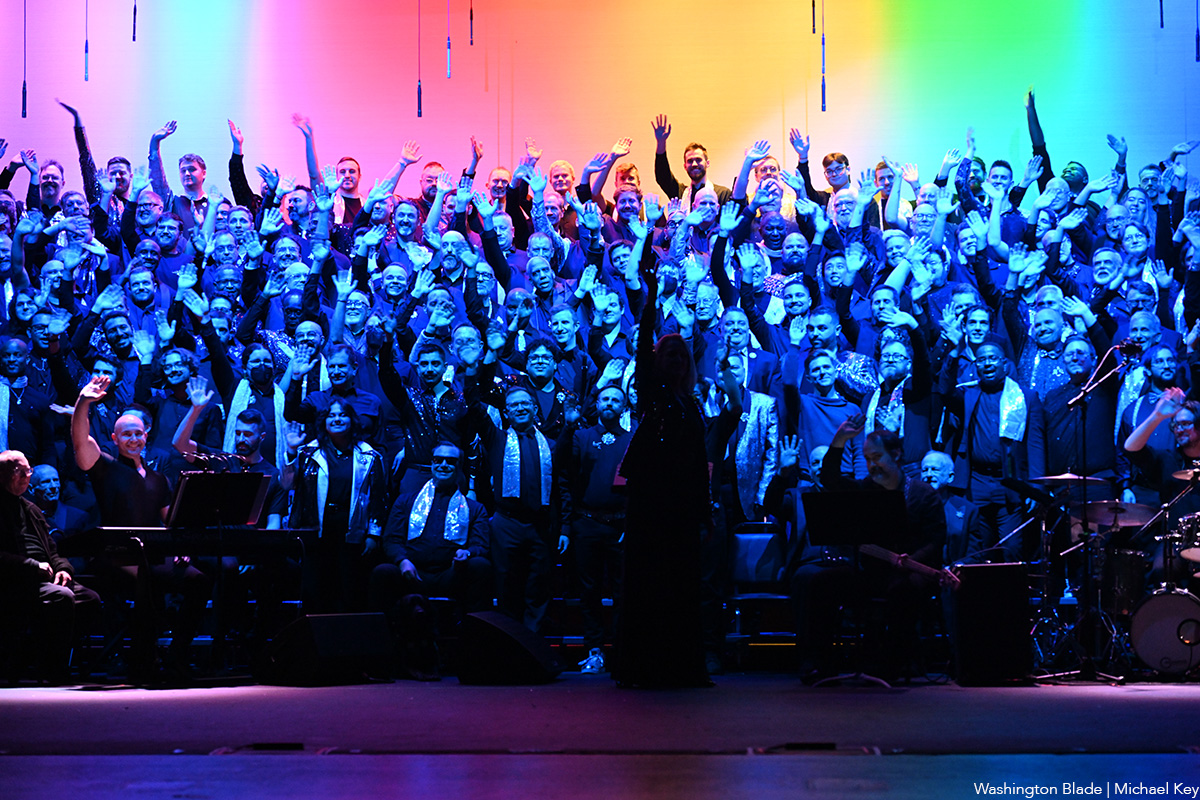

Santa will be very relieved.
You’ve taken most of the burden off him by making a list and checking it twice on his behalf. The gift-buying in your house is almost done – except for those few people who are just so darn hard to buy for. So what do you give to the person who has (almost) everything? You give them a good book, like maybe one of these.
Memoir and biography
The person who loves digging into a multi-level memoir will be happy unwrapping “Blessings and Disasters: A Story of Alabama” by Alexis Okeowo (Henry Holt). It’s a memoir about growing up Black in what was once practically ground zero for the Confederacy. It’s about inequality, it busts stereotypes, and yet it still oozes love of place. You can’t go wrong if you wrap it up with “Queen Mother: Black Nationalism, Reparations, and the Untold Story of Audley Moore” by Ashley D. Farmer (Pantheon). It’s a chunky book with a memoir with meaning and plenty of thought.
For the giftee on your list who loves to laugh, wrap up “In My Remaining Years” by Jean Grae (Flatiron Books). It’s part memoir, part comedy, a look back at the late-last-century, part how-did-you-get-to-middle-age-already? and all fun. Wrap it up with “Here We Go: Lessons for Living Fearlessly from Two Traveling Nanas” by Eleanor Hamby and Dr. Sandra Hazellip with Elisa Petrini (Viking). It’s about the adventures of two 80-something best friends who seize life by the horns – something your giftee should do, too.
If there’ll be someone at your holiday table who’s finally coming home this year, wrap up “How I Found Myself in the Midwest” by Steve Grove (Simon & Schuster). It’s the story of a Silicon Valley worker who gives up his job and moves with his family to Minnesota, which was once home to him. That was around the time the pandemic hit, George Floyd was murdered, and life in general had been thrown into chaos. How does someone reconcile what was with what is now? Pair it with “Homestand: Small Town Baseball and the Fight for the Soul of America” by Will Bardenwerper (Doubleday). It’s set in New York and but isn’t that small-town feel universal, no matter where it comes from?
Won’t the adventurer on your list be happy when they unwrap “I Live Underwater” by Max Gene Nohl (University of Wisconsin Press)? They will, when they realize that this book is by a former deep-sea diver, treasure hunter, and all-around daredevil who changed the way we look for things under water. Nohl died more than 60 years ago, but his never-before-published memoir is fresh and relevant and will be a fun read for the right person.
If celeb bios are your giftee’s thing, then look for “The Luckiest” by Kelly Cervantes (BenBella Books). It’s the Midwest-to-New-York-City story of an actress and her life, her marriage, and what she did when tragedy hit. Filled with grace, it’s a winner.
Your music lover won’t want to open any other gifts if you give “Only God Can Judge Me: The Many Lives of Tupac Shakur” by Jeff Pearlman (Mariner Books). It’s the story of the life, death, and everything in-between about this iconic performer, including the mythology that he left behind. Has it been three decades since Tupac died? It has, but your music lover never forgets. Wrap it up with “Point Blank (Quick Studies)” by Bob Dylan, text by Eddie Gorodetsky, Lucy Sante, and Jackie Hamilton (Simon & Schuster), a book of Dylan’s drawings and artwork. This is a very nice coffee-table size book that will be absolutely perfect for fans of the great singer and for folks who love art.
For the giftee who’s concerned with their fellow man, “The Lost and the Found: A True Story of Homelessness, Found Family and Second Chances” by Kevin Fagan (One Signal / Atria) may be the book to give. It’s a story of two “unhoused” people in San Francisco, one of the country’s wealthiest cities, and their struggles. There’s hope in this book, but also trouble and your giftee will love it.
For the person on your list who suffered loss this year, give “Pine Melody” by Stacey Meadows (Independently Published), a memoir of loss, grief, and healing while remembering the person gone.
LGBTQ fiction
For the mystery lover who wants something different, try “Crime Ink: Iconic,” edited by John Copenhaver and Salem West (Bywater Books), a collection of short stories inspired by “queer legends” and allies you know. Psychological thrillers, creepy crime, cozies, they’re here.
Novel lovers will want to curl up this winter with “Middle Spoon” by Alejandro Varela (Viking), a book about a man who appears to have it all, until his heart is broken and the fix for it is one he doesn’t quite understand and neither does anyone he loves.
LGBTQ studies – nonfiction
For the young man who’s struggling with issues of gender, “Before They Were Men” by Jacob Tobia (Harmony Books) might be a good gift this year. These essays on manhood in today’s world works to widen our conversations on the role politics and feminism play in understanding masculinity and how it’s time we open our minds.
If there’s someone on your gift list who had a tough growing-up (didn’t we all?), then wrap up “I’m Prancing as Fast as I Can” by Jon Kinnally (Permuted Press / Simon & Schuster). Kinnally was once an awkward kid but he grew up to be a writer for TV shows you’ll recognize. You can’t go wrong gifting a story like that. Better idea: wrap it up with “So Gay for You: Friendship, Found Family, & The Show That Started It All” by Leisha Hailey & Kate Moennig (St. Martin’s Press), a book about a little TV show that launched a BFF-ship.
Who doesn’t have a giftee who loves music? You sure do, so wrap up “The Secret Public: How Music Moved Queer Culture from the Margins to the Mainstream” by Jon Savage (Liveright). Nobody has to tell your giftee that queer folk left their mark on music, but they’ll love reading the stories in this book and knowing what they didn’t know.
The Blade may receive commissions from qualifying purchases made via this post.
Theater
Studio’s ‘Mother Play’ draws from lesbian playwright’s past
A poignant memory piece laced with sadness and wry laughs
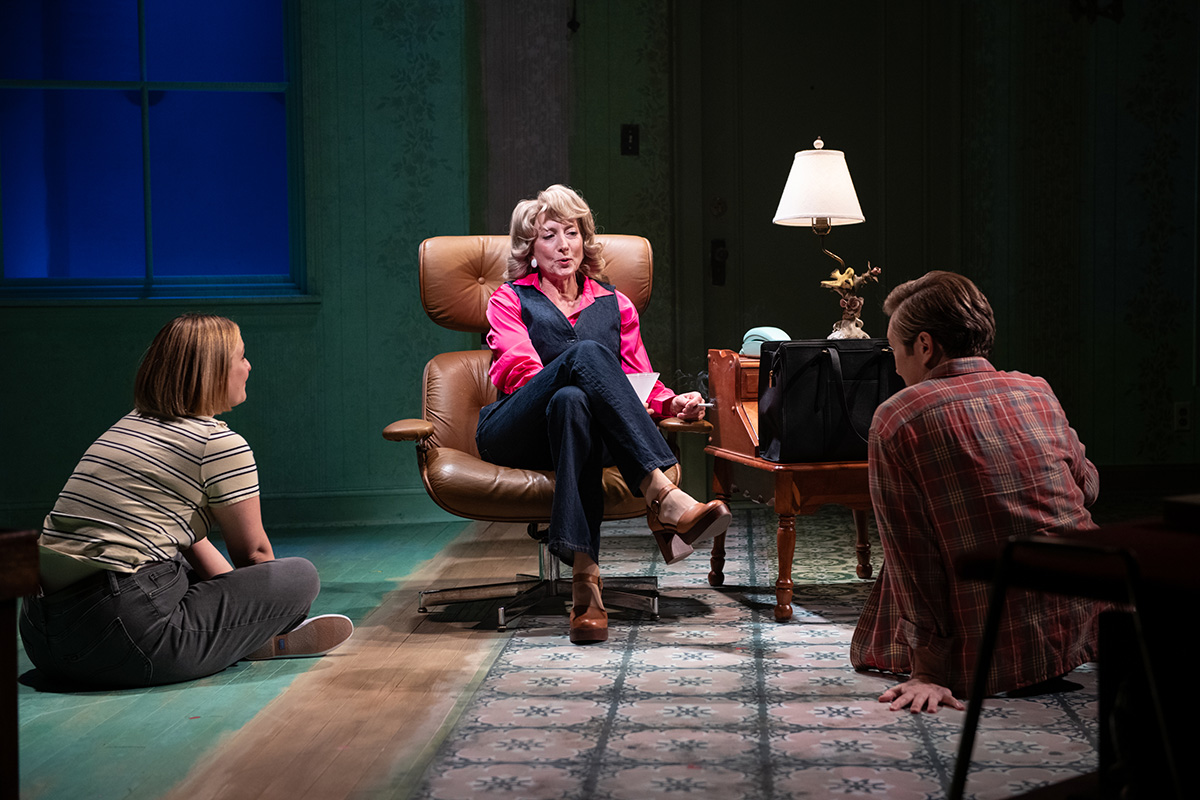
‘The Mother Play’
Through Jan. 4
Studio Theatre
1501 14th St., N.W.
$42 – $112
Studiotheatre.org
“The Mother Play” isn’t the first work by Pulitzer Prize-winning lesbian playwright Paula Vogel that draws from her past. It’s just the most recent.
Currently enjoying an extended run at Studio Theatre, “The Mother Play,” (also known as “The Mother Play: A Play in Five Evictions,” or more simply, “Mother Play”) is a 90-minute powerful and poignant memory piece laced with sadness and wry laughs.
The mother in question is Phyllis Herman (played exquisitely by Kate Eastwood Norris), a divorced government secretary bringing up two children under difficult circumstances. When we meet them it’s 1964 and the family is living in a depressing subterranean apartment adjacent to the building’s trash room.
Phyllis isn’t exactly cut out for single motherhood; an alcoholic chain-smoker with two gay offspring, Carl and Martha, both in their early teens, she seems beyond her depth.
In spite (or because of) the challenges, things are never dull in the Herman home. Phyllis is warring with landlords, drinking, or involved in some other domestic intrigue. At the same time, Carl is glued to books by authors like Jane Austen, and queer novelist Lytton Strachey, while Martha is charged with topping off mother’s drinks, not a mean feat.
Despite having an emotionally and physically withholding parent, adolescent Martha is finding her way. Fortunately, she has nurturing older brother Carl (the excellent Stanley Bahorek) who introduces her to queer classics like “The Well of Loneliness” by Radclyffe Hall, and encourages Martha to pursue lofty learning goals.
Zoe Mann’s Martha is just how you might imagine the young Vogel – bright, searching, and a tad awkward.
As the play moves through the decades, Martha becomes an increasingly confident young lesbian before sliding comfortably into early middle age. Over time, her attitude toward her mother becomes more sympathetic. It’s a convincing and pleasing performance.
Phyllis is big on appearances, mainly her own. She has good taste and a sharp eye for thrift store and Goodwill finds including Chanel or a Von Furstenberg wrap dress (which looks smashing on Eastwood Norris, by the way), crowned with the blonde wig of the moment.
Time and place figure heavily into Vogel’s play. The setting is specific: “A series of apartments in Prince George’s and Montgomery County from 1964 to the 21st century, from subbasement custodial units that would now be Section 8 housing to 3-bedroom units.”
Krit Robinson’s cunning set allows for quick costume and prop changes as decades seamlessly move from one to the next. And if by magic, projection designer Shawn Boyle periodically covers the walls with scurrying roaches, a persistent problem for these renters.
Margot Bordelon directs with sensitivity and nuance. Her take on Vogel’s tragicomedy hits all the marks.
Near the play’s end, there’s a scene sometimes referred to as “The Phyllis Ballet.” Here, mother sits onstage silently in front of her dressing table mirror. She is removed of artifice and oozes a mixture of vulnerability but not without some strength. It’s longish for a wordless scene, but Bordelon has paced it perfectly.
When Martha arranges a night of family fun with mom and now out and proud brother at Lost and Found (the legendary D.C. gay disco), the plan backfires spectacularly. Not long after, Phyllis’ desire for outside approval resurfaces tenfold, evidenced by extreme discomfort when Carl, her favorite child, becomes visibly ill with HIV/AIDS symptoms.
Other semi-autobiographical plays from the DMV native’s oeuvre include “The Baltimore Waltz,” a darkly funny, yet moving piece written in memory of her brother (Carl Vogel), who died of AIDS in 1988. The playwright additionally wrote “How I Learned to Drive,” an acclaimed play heavily inspired by her own experiences with sexual abuse as a teenager.
“The Mother Play” made its debut on Broadway in 2024, featuring Jessica Lange in the eponymous role, earning her a Tony Award nomination.
Like other real-life matriarch inspired characters (Mary Tyrone, Amanda Wingfield, Violet Weston to name a few) Phyllis Herman seems poised to join that pantheon of complicated, women.

